By Chris Dubuque, George Dyke and Yves Boulanger….
In 1921, Citroën attempted to offer its cars in the Quebec market. Franco-Canadian Auto Co. Ltd. In Montreal was briefly selling Citroëns, for a short time in 1921. They showed a Citroën at the 1921 Montreal Motor Show.

Willys Distributors BC Ltd. (in Vancouver) was offering Traction Avants briefly in 1949.
The Traction Avant was never sold in Quebec.
First — A quick look at how Citroën and the DS came to the USA
Before the mid-1950’s, Citroën did not formally import cars into the USA (or Canada). There were however a few independent importers in the USA that brought in small numbers of Traction Avants:
- Challenger Motors (1938) Los Angeles, CA
- Northwest Light Car (1939) Portland, OR
- – WWII interrupted these businesses –
- Challenger Motors (1952 – resumed) Los Angeles, CA
- Campbell Motors (1952) Pasadena, CA
After WWII and anticipating the DS, Citroën decided to formally enter the North American market setting up a company in the USA called Citroën Cars Corporation. By the mid-1950’s, this business had a new purpose that was described as: “…a factory owned subsidiary and distributor of Citroën cars in the USA…”
Several men were identified to run American Operations:
- Charles Buchet/Michel Rappellini (east coast)
- Armand Garnier/Albert Bonfond (west coast)
Citroën’s export director Michel Koundadze notified Challenger Motors of the new American operations, signaling a practical start of Citroën in the USA (see letter from February 1955).
Citroën quickly set up two new headquarters; one on the East Coast and one West Coast.
The West Coast Headquarters/showroom was located at 8423 Wilshire Boulevard, Los Angeles. It opened in January of 1955, pre-dating the arrival of the DS in the USA by more than a year.


The East Coast had an administrative office in 1954 manned by Charles Buchet.
The first New York showroom had its grand opening during the last week of March, 1956 – about a year after the Los Angeles facility opened.

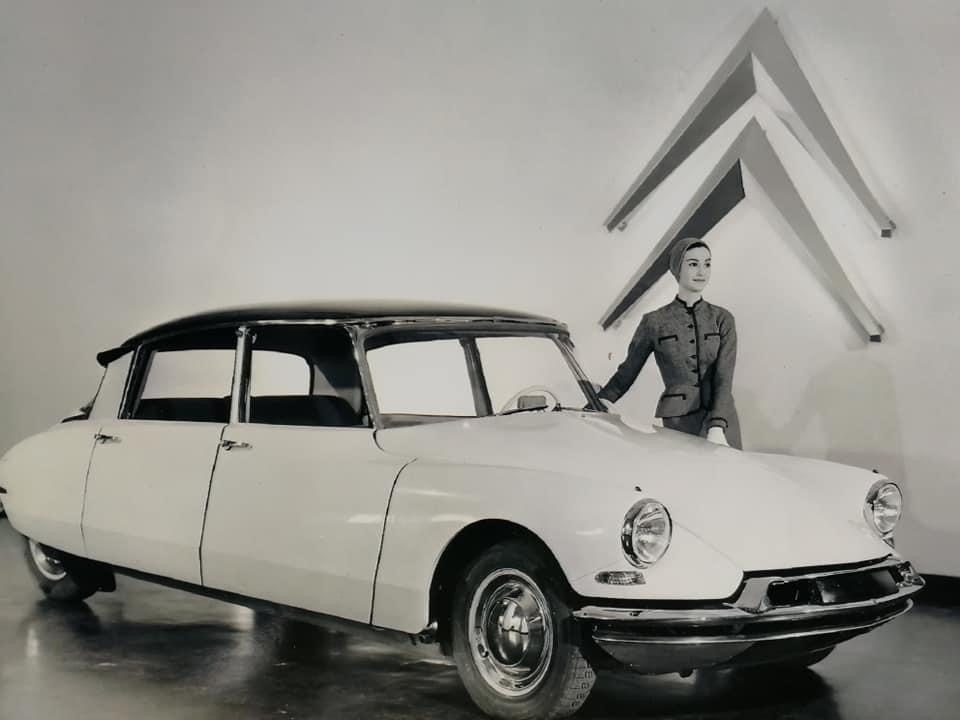



The first DS that Citroën brought to America was S/N 129.
It was rushed to the Chicago Auto Show from New York City in January, 1956.
With Citroën as the importer, they recruited dealers around the country to be factory authorized retailers for Citroën cars.
Panhard was also sold by Citroën in the USA. On October 1, 1956 the Dyna Z was introduced in the USA to offer the American market a car from Europe with a sporting track record, (85 miles an hour top speed and victories in competitions — in particular at the 24 Hours of Le Mans.
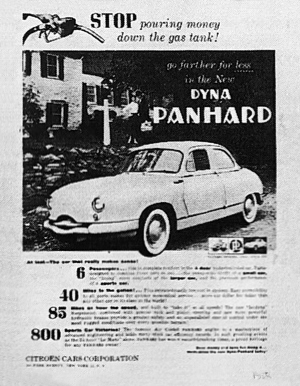
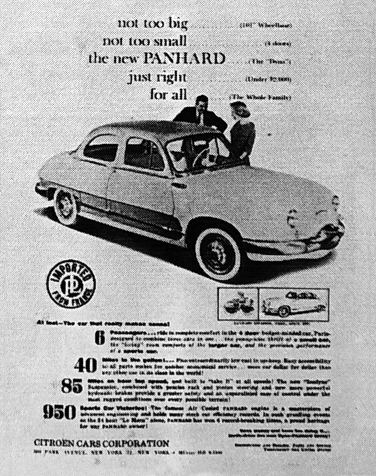
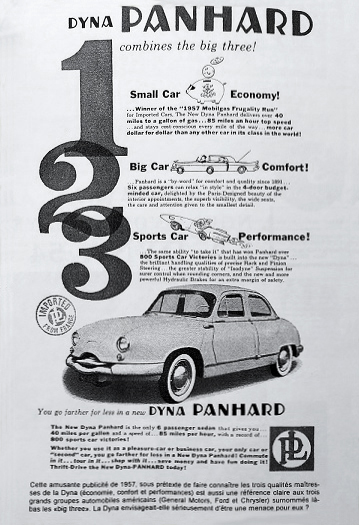
By the following spring, Citroën decided to integrate the Panhard into its American range which already included the 2cv and the DS.
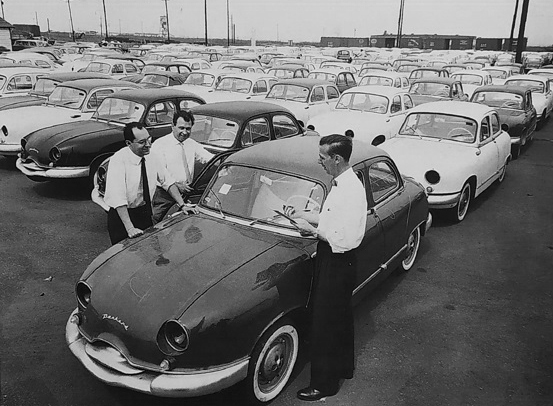
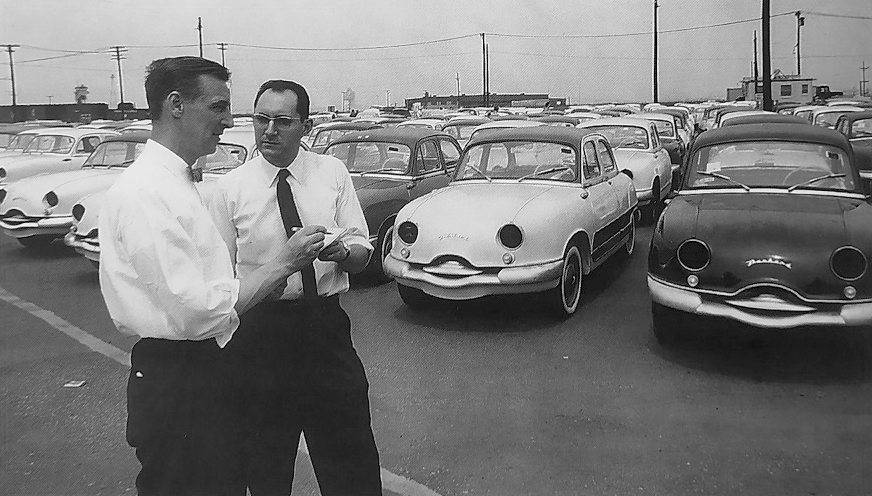
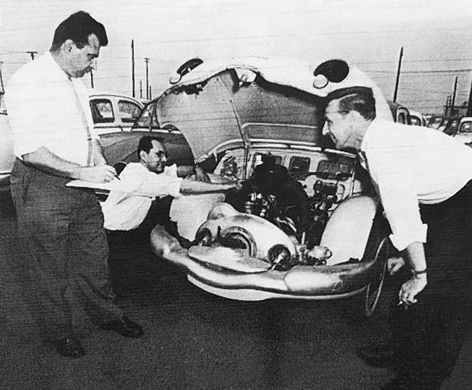
Panhard Dynas in the USA arrival lot. Note that headlights are not installed. Sealed beam unites were added in the USA.
A “Buy in Europe and Import to the USA” program was also marketed:
126 Dyna Z were sold in 1957 by the Citroën in the USA, and in 1958 that figure reached 283 ( the maximum reached in one year). In 1959, about 100 Dynas still found buyers, before giving way to the new PL17.
Factory backing of USA operations allowed centralized spare parts supplies, a standardized warranty process, manuals (in English) that cover US models, etc.
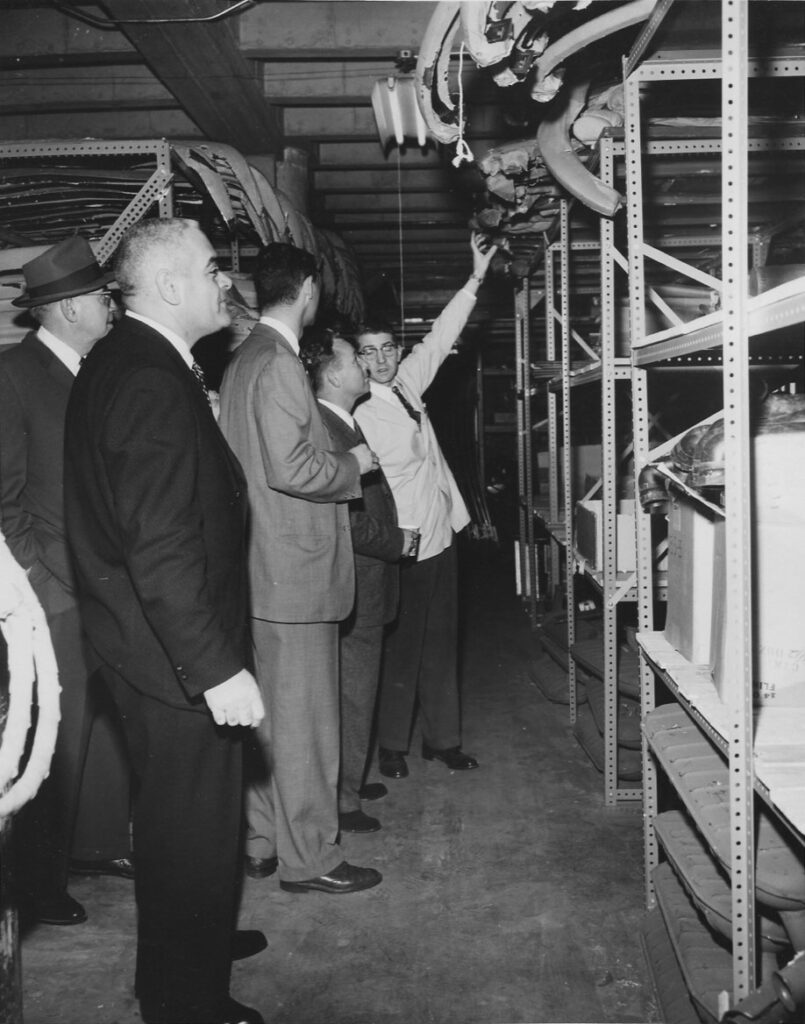
The First DS in Canada
The first DS in Canada was most likely in Vancouver, in January, 1957. It was there to participate in the VAN-MAN-VAN rally (A 14-hour winter event — Vancouver to Manning Park and back). The car was a 1956 DS19 demonstrator that was driven to Vancouver from the Citroën dealer in Seattle (French Cars Inc.). The driver was Ralph D. Gage, a co-owner of French Cars Inc. The DS came in third out of nearly 200 participants.
Frank Nashland (a former French Cars Inc. salesman) once said the following about their demonstrator:
”…(it) was a drab beige color (that did nothing for sales)…”
After this car’s appearance, not much else happened with Citroëns in Canada for a year.
Citroën started their efforts in Canada in early 1958. Instead of setting up a factory branch in Canada, they had another idea… Convince Canadian businesses to become “independent importers/distributors” of Citroën cars. These independent importers in Canada would act as wholesalers and in turn would recruit local businesses to become dealers.
Citroën needed a point-man to execute this plan and to recruit these businesses… Enter Alain Feraut… (a Citroën export manager).
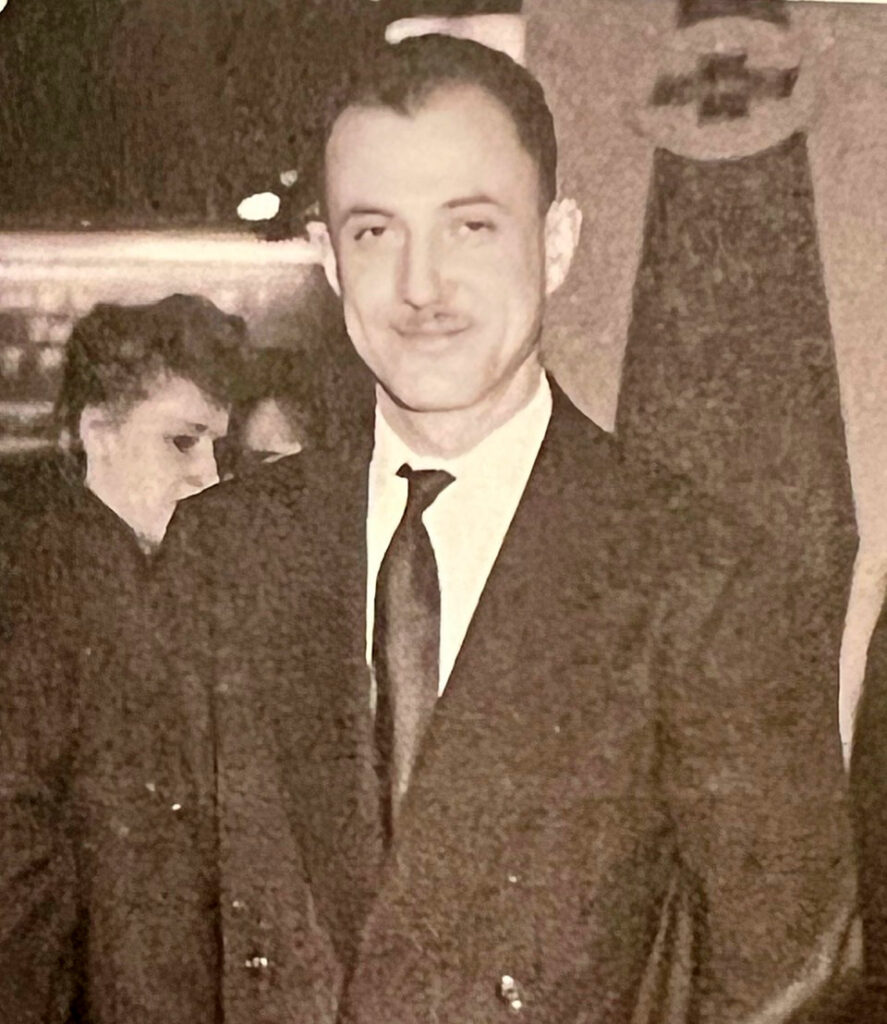
Canadian vs USA Strategy
Alain Feraut began a recruitment campaign commencing in March, 1958 in a room he reserved at the Ritz Carlton Hotel, Montreal. (It was Montreal’s most luxurious hotel and he wanted to convey a similar Citroën corporate image to prospects).
Auto France – The Quebec Choice
Alain Feraut’s first recruit was a man named Harry Dubrofsky, a local Montreal businessman. Dubrofsky signed up and named his new business Auto France (as both a wholesaler and retailer).
Auto France started operations in May of 1958 selling Citroëns and Panhards in two locations in Montreal; 7670 Decarie Boulevard and 7144 Cote-des-Neiges.

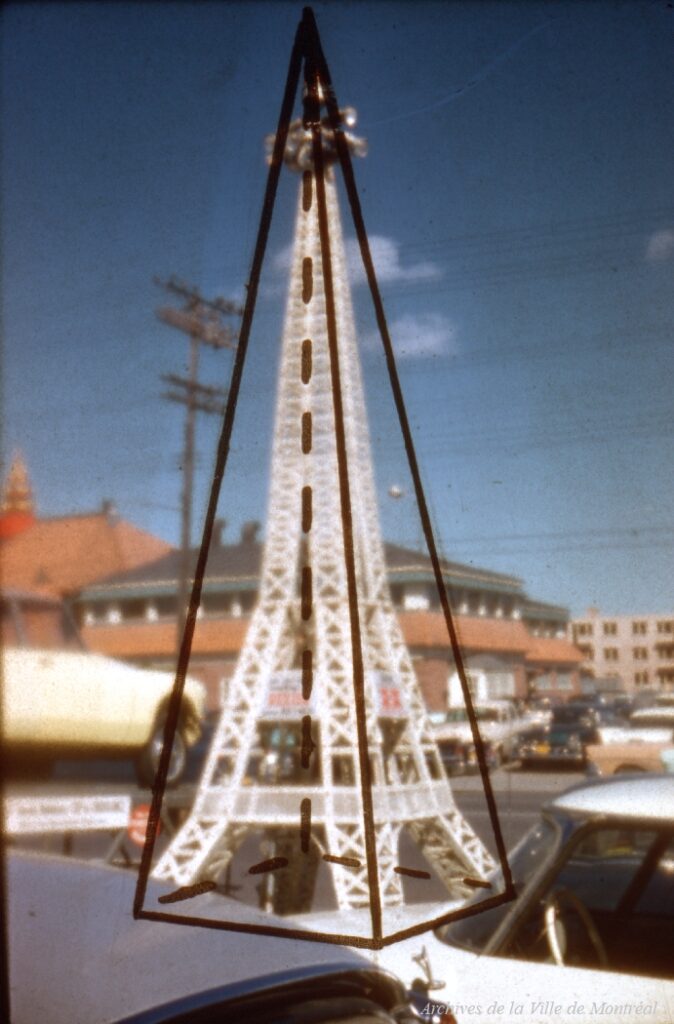
Jim Fergusson – The Ontario Choice
Alain Feraut’s next recruit was a man named Jim Fergusson, who operated a car dealership in Toronto called Jim Fergusson Motors with a main location at 3020 Yonge Street in Toronto. Fergusson also operated a dealership at 2301 Queen St. East in the Beaches neighbourhood of Toronto.
Fergusson started with his Citroën operations in May of 1958 (both wholesale and retail).
Fergusson Billboards in Toronto, circa 1960.
Alice Fergusson (a slight digression for a remarkable woman)
Jim’s wife, Alice Fergusson, was prolific in the auto racing and rally scene in Canada. She is said to have been a skilled mechanic and built engines used for her various racing endeavours.
In 1937, Alice met Jim Fergusson, a professional motorcycle racer, at a party in their hometown of Toronto. Jim was engulfed in the sport and he eventually became a sports car and sedan racer, serving as a team manager, crew chief, mechanic, race and rally organizer, official, racing car designer and constructor. Jim loved the world of automotive and shared
his passion with Alice, who recalled “most of our dates consisted of me helping him grind valves for his bikes.”
After Jim and Alice married, Jim inherited his father’s car dealership in Scarborough, where the couple settled. Alice became enveloped in the automotive world and helped in the shops at night after working as a stenographer during the day. Gradually she dropped her stenographer career and became a part time saleswoman at the dealership.
Alice operated the Fergusson’s auto dealership while Jim was serving in WWII. She took a mechanic’s course where she learned how to operate all types of heavy machinery, from farm tractors to bulldozers. This training proved helpful as one winter (when help was limited due to the war) she voluntarily drove a tow-truck around Toronto and pulled drivers out of ditches and snowbanks.
Jim returned from the war in 1945 and resumed full time operations of the dealership, while Alice took over the parts department full time in addition to her own speed shop. In the speed shop, she imported parts internationally and built engines for sports car competitions across Ontario. She became a highly skilled mechanic, as seen in 1952 when she built a stock car engine that set a track record at the Canadian National Exhibition (CNE) raceway.
By 1956, the Fergusson’s had acquired a second car dealership, and Alice ran it full time day to day. She was Toronto’s first female garage owner/operator. She had won dozens of speed and skill trophies by this time making her one of the top female drivers in the country.

She placed third.

In 1972, Alice and Jim ran a Citroën ID in the Cannonball Baker Sea-to-Shining-Sea Memorial Trophy Dash, from New York to California. They apparently did it in the 1958 ID19 that she first ran at Harewood in 1958. They came in 15th with a time of 42 hours, 8 minutes! Can you believe that they thrashed a 14 year old ID19 driving it across the entire USA in just over 42 hours?.
The Dash would be Alice and Jim’s last major race together as Jim passed away in 1976. Alice passed away in 1997. Alice and Jim were inducted into the Canadian Motorsports Hall of Fame in 2004 together for their “purely voluntary remarkable contribution to the development of Canadian motorsport
Alain Feraut in Vancouver and Edmonton – Double Nine
Alain Feraut’s Western Canada recruitment effort began in May, 1958 where he again took rooms at the Hotel Vancouver (Vancouver)and Hotel MacDonald (Edmonton).
His next recruit was a man named Joseph V. Boscher who had been running a dealership called Double Nine Motors in Edmonton. Boscher wanted to sign up for Alberta and British Columbia.
Double Nine started offering Citroëns & Panhards by the summer of 1958.
Double Nine Motors did sign up some dealers; Regent, Reliable, LeMans, Regal, and Clarke Simpkins, but failed almost immediately.
In 1959, Joseph Boscher found himself in court for fraud associated with forged auto lease paperwork and then for perjury in the associated court cases. He ended up in jail with a 2 year sentence and Double Nine was bankrupt by early 1960.
Double Nine’s stock of cars was shipped back to Auto France in Montreal and offered at steep discounts.
A New Beginning Out West
With Double Nine out of business, who would supply cars to the dealers that had signed up with Double Nine? A new company was set up with Alain Feraut’s help to replace Double Nine. Citroën Cars Distributors, BC Ltd. was established as a wholesale office only, located in the Seymour building in Vancouver.

It is not clear who was running Citroën Cars Distributors, BC Ltd. (Maybe the owner of a local Studebaker dealer?), but it caused a turnover of Double Nine’s recruits.
To cover the void left by the demise of Double Nine in Alberta, by 1960 Alain Feraut had signed-up Pioneer Automotive in Edmonton, Alberta.
Canadian Strategy – Cracks Emerge
The strategy of independent importers/wholesalers had problems;
- There was an inadequate spare parts supply and wholesalers and/or dealers had to fend for themselves for locally stocking spare parts.
- No efficient policy to handle warranty issues
- Inadequate training for dealers and mechanics
- No coverage in parts and repair manuals specifically for Canadian models
- DS’s were not performing well in the Canadian climate (rust, inadequate heating and defrosting, etc.)

Canadian Strategy – A Re-think
Citroën eventually reacted to the problems associated with the independent importer strategy. They decided to come into Canada themselves with a more traditional model (similar to the USA method).
By 1962 Citroën had set up a Subsidiary in Canada called Citroën Canada Ltée. The company was registered with the government of Canada on February 1, 1962. With this new company, they chose to not import Panhards.
Alain Feraut was appointed the first General Manager of Citroën Canada Ltée.
Once Citroën started importing cars themselves, there was no need for Auto France, Jim Fergusson, and Citroën Cars Distributors BC, Ltd. And sure enough…..they all disappeared, almost overnight.
This change caused another big turnover with dealers.
What Happened to the Independent Distributors?
- Joseph V. Boscher (Double Nine Motors) ended up in jail, then went on to work as a salesman at Waterloo Motors in Edmonton (a Lincoln Mercury dealer).
- Jim Fergusson (Fergusson Motors) apparently closed his dealership after Citroën usurped his business in 1962.
- Harry Dubrofsky and a few colleagues tried to become an independent Panhard importer in 1962. This idea failed almost immediately, so Dubrofsky started importing Toyota and Isuzu in 1964. He was involved with (or perhaps started) a business called, “Montreal Canadian Motor Industries” that was distributing Toyota and Isuzu cars. He is listed as the president of this business and interestingly, one of the addresses he lists for this is 7144 Cote Des Neiges — the very same building that he was using for Auto France (1958-1962) and then was used by Citroën for the first headquarters of Citroën Canada Limited (1962 – 1964). He also ran an auto body shop on Viateur street into the 1970’s. Montreal Canadian Motor Industries lasted from 1965 until at least 1973, maybe a bit longer. This business grew as there are several newspaper articles in the 1960’s discussing new facilities, etc. Eventually Montreal Canadian Motor Industries morphed into Toyota Canada, but Harry didn’t experience much of Toyota Canada’s growth and success as he died in 1975.
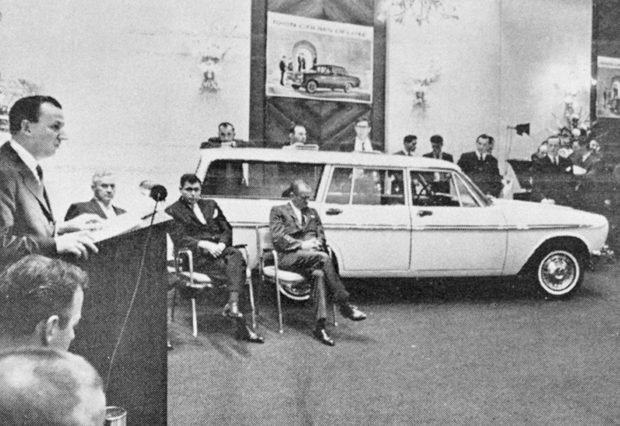
- Norbert Lecour (Auto France, Panhard Distributors of Canada). The former general director of Auto-France, a Belgian named Norbert Lecour, went on to be hired by Citroën Canada. It is he who became the real pillar of the company because the French administrators were much more obsessed with image and politics than with developing sales and resolving technical problems.
Citroën Canada Ltée
Citroën Canada’s very first location was one of Auto France’s locations in Montreal. The DS, its sister ID, the Ami-6, 2CV, and the H van were offered.
Sales were difficult. The 2CV being air-cooled, was poorly heated (even with an auxiliary gas heater) and poorly adapted to our Canadian climate. The DS fared a little better, but while it’s futuristic and non-conformist features attracted some, it put-off others. Citroën only sold a few hundred cars per year in Canada, mainly in Quebec, placing far behind Renault, Peugeot and even Simca.
In the fall of 1964, Citroën Canada decided to open a branch in Quebec and Norbert Lecour hired a young business graduate for this purpose, Gérard Larochelle. Already the owner of a 2CV, Larochelle had already proven himself by helping a small dealership sell a few DS. He found premises on Boulevard Hamel, recruited staff and business began in November. The head office sent him some 1964 DS while they had begun receiving 1965 models. Sales began immediately and reached 50 or 60 cars per year. The Quebec branch soon became the most active Citroën showroom in the province.
Lecour hired another fellow called Michel Fabien in 1965 to start a leasing program. The program was a failure as the cars had little residual value, but Fabien turned out to be an asset and took over when Lecour transferred to the Birtish Columbia office in 1970.
In 1965, Citroën moved to a larger headquarters in Montreal at 4010 Sainte Catherine St. W. in Westmount, in premises dating from the 1930s. (This was Dubrofsky’s Panhard location, marking the second time Citroën took over one of Dubrofsky’s locations.) At that time on this part of Sainte-Catherine St. there was a concentration of showrooms of all brands and it was nicknamed “Motor Row “. In Citroën’s building, the showroom was sumptuous but after-sales service was upstairs and accessible by a particularly dilapidated freight elevator that still makes those who have known it cringe.

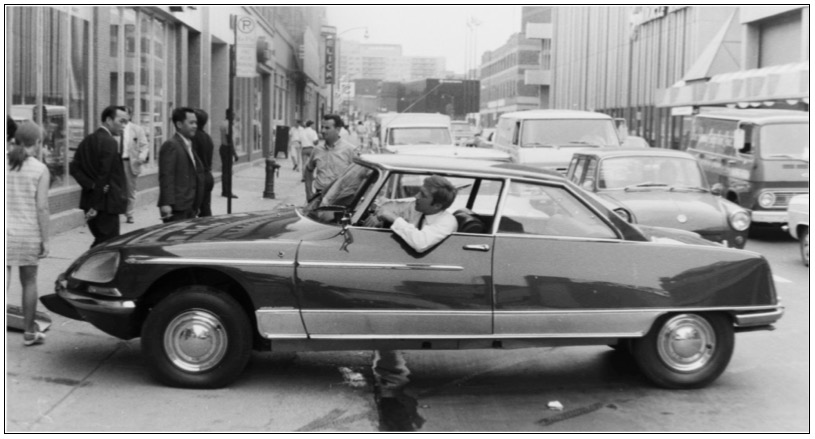
By the mid-1960’s, Citroën Canada had considerably expanded opened a number of factory branches, including several parts warehouses in Montreal,
Sherbrooke, Quebec City, Toronto and Vancouver.
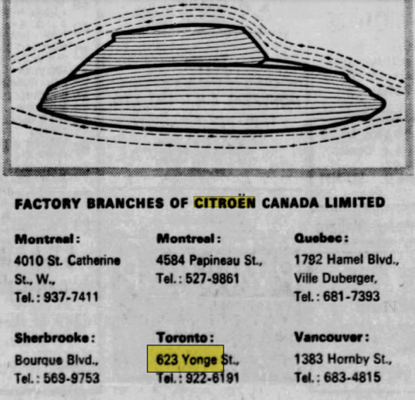
In the mid-1960’s, there was talk about Citroën building a manufacturing plant in Canada, but this of course never materialized.
Also in 1965, Citroën added a headquarters in Toronto at 623 Yonge Street, (just a couple of miles south on Yonge Street from where Jim Fergusson had been operating).
By about 1969 they had moved to 999 Danforth Ave. in Toronto.
Also in 1965, Citroën Canada built a west coast Canadian headquarters in Vancouver at 1290 Burrard Street. It lasted until 1972 when it became a Toyota dealership.
And created a number of Dealer and Distributor pamphlet listings:
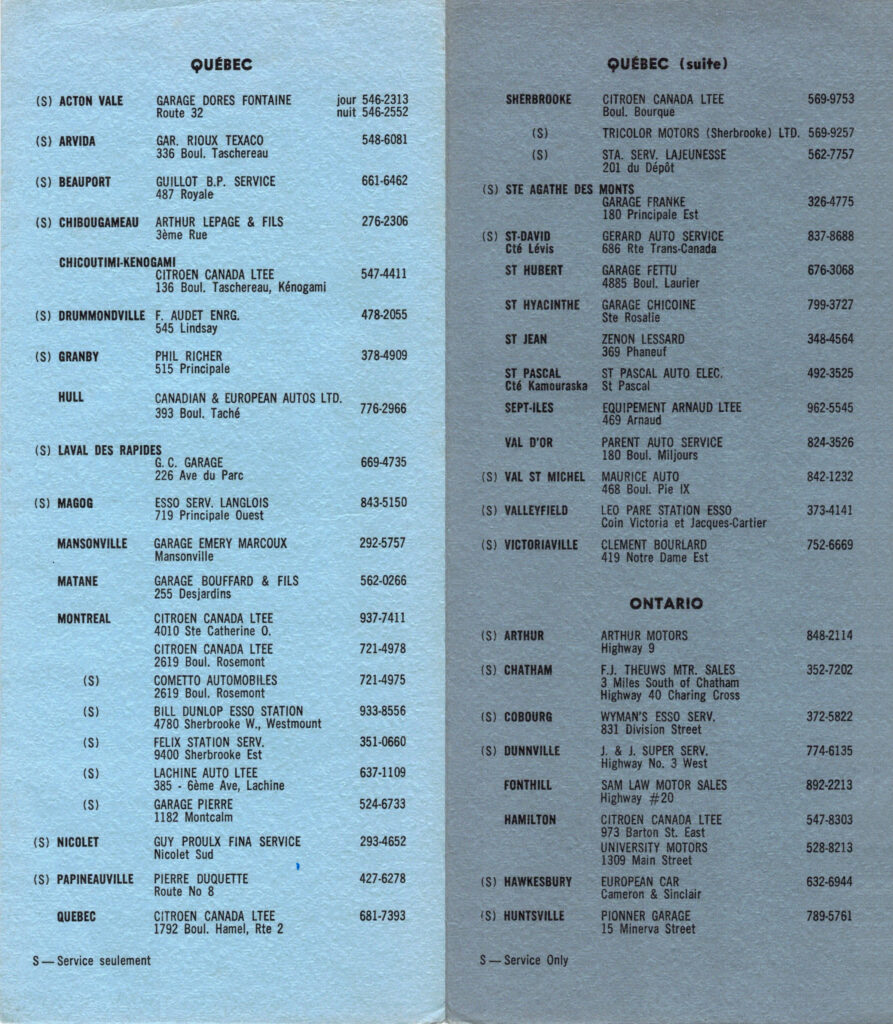

Claude Guillot Tackled Canadian Technical Challenges
In 1958, the Citroën factory’s export department sent a technician, Claude Guillot, to train the Auto-France mechanics. He met a young lady who became his wife, and never left.
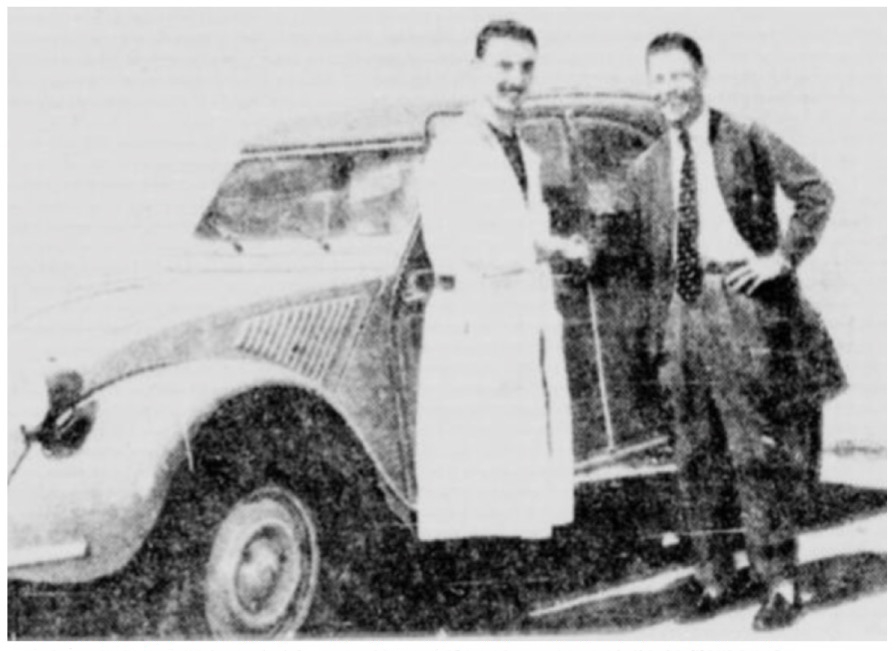
One example given is from Yves Boulanger, a Citroen enthusiast in Montreal. Yves recalls that his first Citroën, a 1966 DS19, was equipped with an AC-Delco alternator. One Wednesday evening a few years ago, at a VEA meeting, he mentioned that North American component to Claude Guillot. Against all expectations for those who knew him (he was resoundly ‘French’ and a stickler for total originality), he said to Yves “I did that”. He explained that cars equipped with dynamos only gave 25 amps at full throttle and not much at idle. When a customer was driving in Montreal in the winter with the defroster, headlights and windshield wipers on as he drove through heavy traffic, the dynamo produced less than what was drawn from the poor battery. The chances of starting the next morning were nil. Customers were complaining and the factory had no solution. The technical director asked Claude to find one. After some research, he went to Gagnon Batteries, an AC-Delco agent, where he was offered an alternator that fit quite well.
It not only had double the power rating, but already gave half of its maximum output at low revs. Claude tinkered with a support to mount it on his company car. Satisfied with the result, he showed the car to his boss. He asked him to do the same assembly on the car of the customer who complained the most, resulting in success! Subsequently, an AC-Delco alternator was fitted to each DS of a dissatisfied customer.
A few months later, the VP of exports of the parent company made his regional tour stopping in Montreal. Claude was at his office and saw the big boss coming towards him accompanied by the VP. He asks him, “Claude, show Monsieur what we did for the generators.” Claude guided his visitors to the workshop and showed them the installation of the alternator in a DS that was there. Quickly, he sees the VP stiffen, turn red and say to the boss, “You! In the office! Right away!” The two locked themselves in an office, slamming the door. Claude heard the VP through the wall shouting: “Can’t do that! Only the design office…blablabla…” Then finally the VP came out in a fury, threatening to tear the door off its hinges and shouting “You will hear about this!”. Claude walked towards the office and asked the boss “What are we doing?” to which he replied without hesitation “You keep going!” It took Citroën another two years before introducing the alternator on the DS with the production of the 1968 model.
Claude also recalled that the DS hydraulic system did not like the cold, especially LHS cars, recounting a story of a customer complaining that after starting his car, he couldn’t move the hydraulic shift lever. Claude had him leave the car parked outside overnight. Next morning, he stepped out in the cold with his coffee mug. He put the mug on the « shelf » next to the steering wheel and started the car. Sure enough, the shifter was frozen. After a few minutes, he was able to move it freely. Heat from the coffee mug had warmed up the hydraulic valve. Solution found.
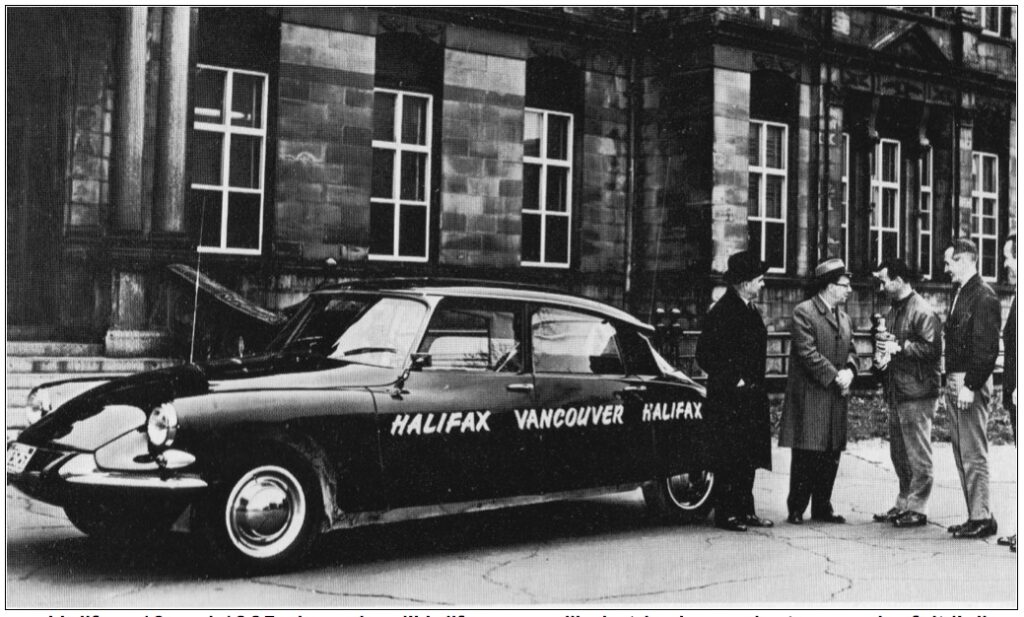
The Canadian Specification DS
Starting in 1965/1966, Citroën introduced a special Canadian Specification DS to address some of the problems that DS’s were experiencing in Canada:
- Special undercoating
- Special paint
- -15C option as basic
- Auxiliary heater (rear seat heater)
- Flap in air duct to radiator
- Dust option as basic
- Reservoir cap
- Gas tank breather
- Gearbox breather
- Air cleaner (1965 only?)
- Engine block heater
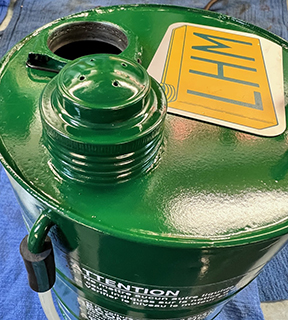

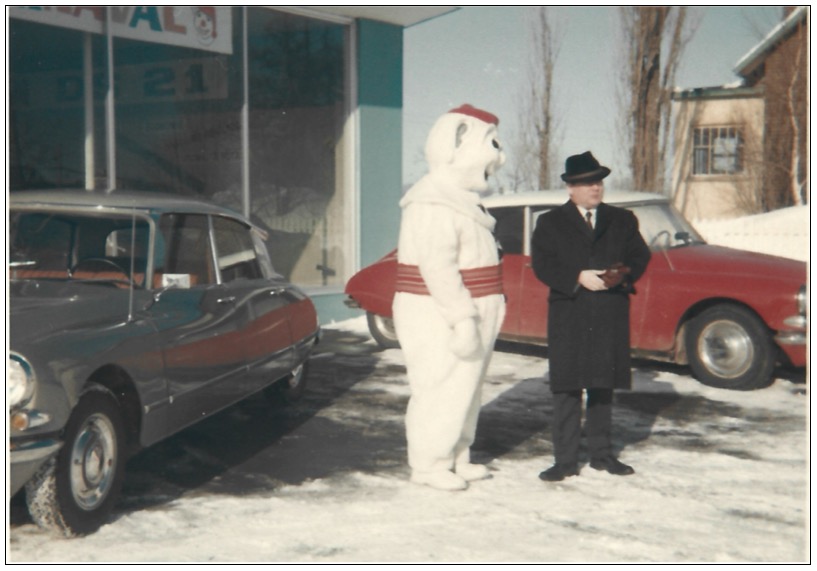
At the end of 1966, disillusioned with Citroën Canada by the lack of seriousness, Gérard Larochelle chose to direct his career towards the world of insurance. At the beginning of 1970, a former colleague, Michel Fabien, had just been promoted to national sales director and convinced him to come back. He asked him to take charge of the eastern half of the province, in which 142 cars were sold in 1969. Gérard took up the challenge. He traveled across Quebec and opened dealerships as far as Sept-Îles. [It should be noted that Citroën Canada’s sales had slowly reached around 1,000 cars per year in 1969, including around a hundred twin-cylinder Ami 6s, Méhari and especially Dyane, models that were sold out in 1970.] Citroën sold 475 cars in the Eastern Quebec province in 1970 and 600 in 1971. A truly phenomenal performance for a territory that only contained Quebec as a major city. And they hoped to do better with the arrival of the SM and the GS which were both presented at the 1971 Montreal Auto Show.
The Jean Beliveau DS
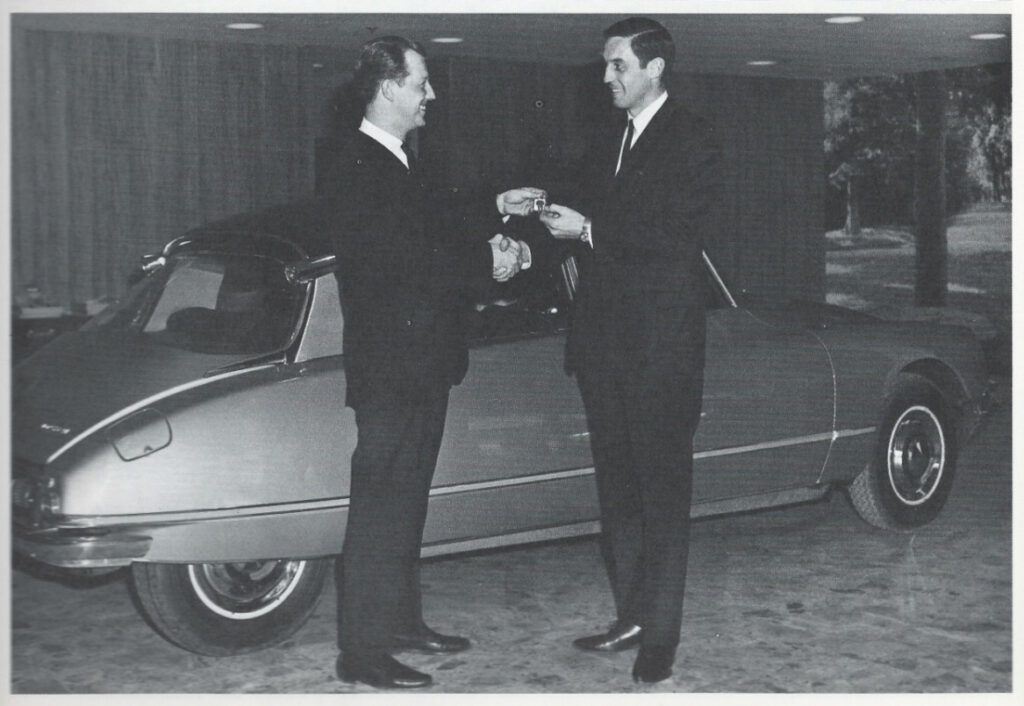
(Read the full article “Le Beliveau DS” in our Citroënvie document archives.)
Citroën and Fiat Co-operative
In 1969, Citroën and Fiat joined forces in Canada to share each others dealership locations (though not all Fiat dealers took on Citroën and vise-versa).
Citroën Canada Ltée – Montreal Relocation
In 1971, Citroën Canada abandoned its sumptuous showroom on Sainte-Catherine and let a newcomer, Eugène Carrié Automobiles, ensure a presence downtown. Citroën moved into the former VW Canada premises at 5465 Royalmount Ave. in Montreal. The 50 service bays were a great luxury compared to the old location. Fiats were briefly sold there with Citroëns, as well as at several Citroën dealerships.
The Demise
The evolution of safety and emission standards altered the situation. By the summer of 1971, the plan to import the GS had been shelved. In 1972 Canada adopted auto safety and pollution rules that were similar to those that were adopted in the USA;
- 1968 – FMVSS – Federal Motor Vehicle Safety Standards (USA)
- 1972 – CMVSS – Canada Motor Vehicle Safety Standards
These rules marked the beginning of the end of the DS and SM in North America. From 1972, to meet the safety standards adopted by Transport Canada, Citroën offered the USA versions of the DS and SM, recognizable in particular by their ‘open bucket’ sealed headlights. And the “USA” DS trickled in… which slowed down sales.

As of January 1st 1972, all cars imported or manufactured in Canada had to comply with the new US-inspired (but not always identical over the years) safety and emission regulations. [Note that we do not state “all cars SOLD in Canada”.] Distributors were allowed to sell in 1972 non-compliant cars manufactured or imported in 1971. (Many Alfa Romeos and Fiats were sold one or two years after their build date, and registered as of the year they were first sold. Though in Citroën’s case, a shift in the distribution network precludes the idea of overstocked Euro models being sold in 1972, especially since Gérard Larochelle claims they were selling all they received.)
There was one small window of opportunity for 1972 Euro cars to come in legally. Citroën typically introduced its new models at the Paris Auto Show which is in early Fall. Citroën had a European “TT” new car delivery program for Canadian tourists, going back to the days of the Traction and still active today. Up until 1972, a Canadian tourist who ordered a new Euro spec Citroën for delivery at the factory was free to bring it back home after vacationing in Europe.
The SM had a reprieve: due to its shorter wheelbase (2,900 mm vs 3,124 mm for the DS). The Canadian safety regulations of energy-absorbing and standardized height bumpers would not apply until 1974. And unlike the DS, the SM already had a steel roof as part of its unitized body structure. Citroën Canada felt that they could survive with the SM and wait for the CX.
However the SM had reliability problems, in particular with the operation of its archaic piston AC compressor which destroyed its coupling and caused stress on the long timing chains of the Maserati engine with its four camshafts. Although the SM enjoyed some success in 1972, boosting the brand’s sales on the American market, Citroën Canada barely sold more than a hundred per year. And with 1973 came the energy crisis: the SM was not the product of the hour. Citroën Canada sold a few dozen more as its dealer network crumbled. In Gérard Larochelle’s territory, only the Quebec agency was authorized to offer it but did not keep one in stock. As he was in effect getting paid to do nothing, he decided to bow out.
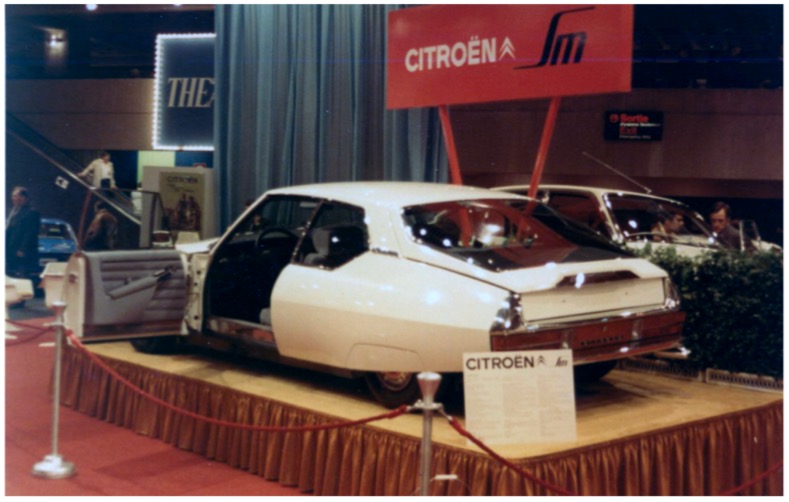

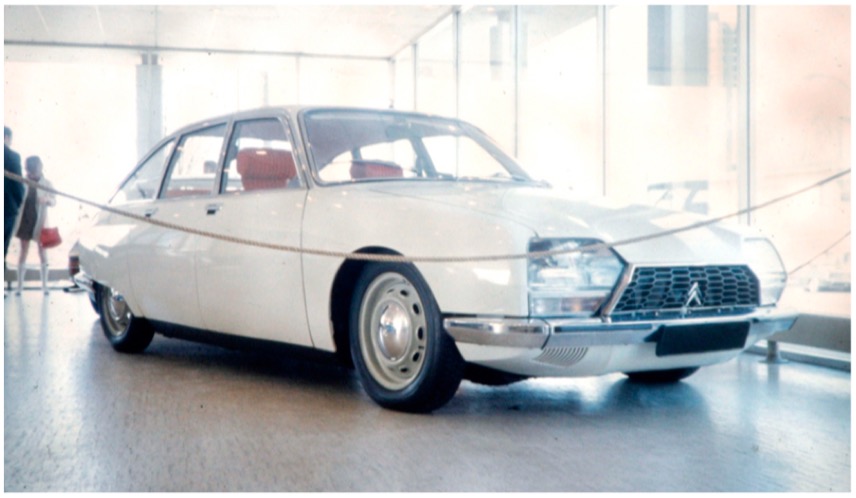
Four DS EFI models were imported into Canada – and maybe North America – by Citroën. According to Claude Guillot, out of the four EFI models, one belonged to the sales directeur of Citroen Canada, Michel Fabien, one went to Toronto and the other to Winnipeg. The fourth one was sold to a Canadian movie star of the time – Danielle Ouimet – or to her boyfriend. Alas! that car is no more… Somehow the boyfriend – or at least the car – was involved in the French Connection – or similar organization – and the car was used to conceal and import heroin into North America. It was impounded by the RCMP or Customs Canada and more or less cut in pieces to retrieve the “stuff”. Claude knew because he was asked to advise the RCMP or Customs on where to look into the car for places of concealment.
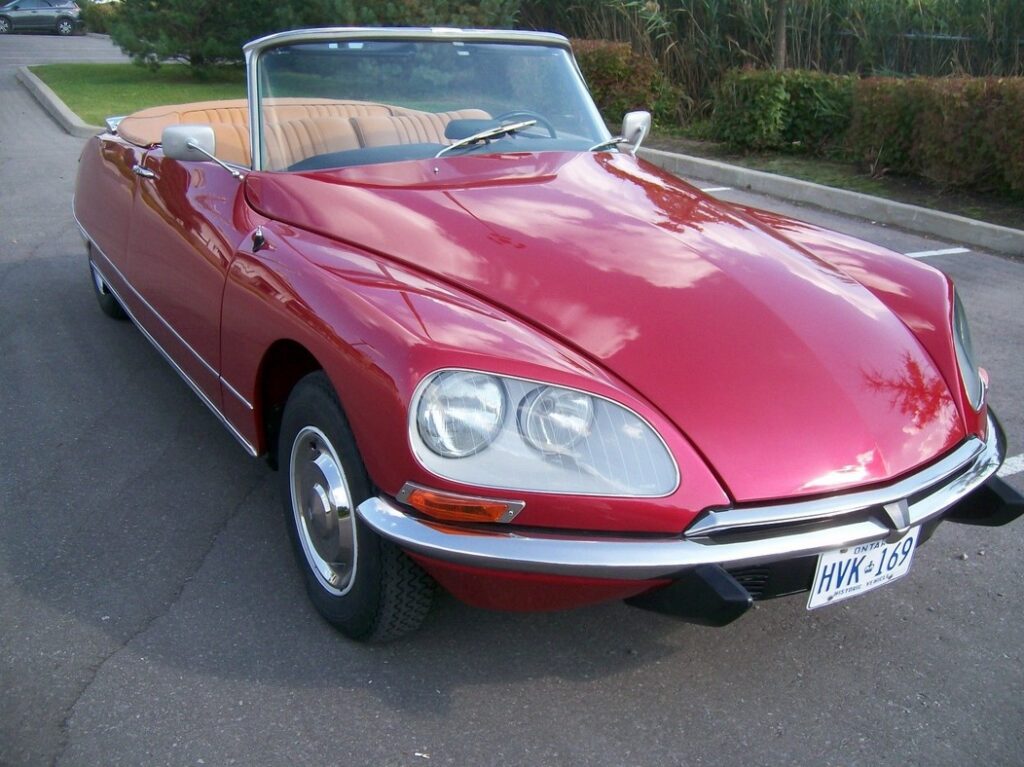
1972 — Citroën stopped importing DS’s to North America. A smaller number of DS were imported towards the end with the Borg Warner automatic gearbox. Claude Guillot stated that Citroën Canada imported for evaluation a DS station wagon fitted with the Borg Warner automatic. It was his the company car.that he had. He said Citroën had a contract with Borg Warner to supply a certain quantity of transmissions which ended up way too many for the number of SMs they were selling. So Citroën ended up fitting them to the DS as well.
By 1973, FMVSS required:
- Side Impact protection
- Front and rear collision protection
- Self-cancelling turn signals
- Variable bumper height becoming a problem
- Fully powered brake system was becoming a problem in the USA
1973 — Citroën stopped importing the SM to North America. The entire Citroën network in North America impatiently awaited the CX that was launched in the summer of 1974. But at the end of that year, Peugeot bought Citroën. The Canadian operation immediately was placed under the control of Citroën USA.
Citroën Canada left the large workshops of Royalmount Ave. for industrial premises on the Trans-Canada Highway. What’s the point of a showroom when you have nothing to exhibit? In a mortuary atmosphere, they stocked and sold spare parts and “achat-rachat” (purchase-redemption) European rental plans. The agony lasted until October 1977, at which point René France, the director of Citroën USA, was summoned to Quai de Javel. He expected to be presented with the CX in North American version. Instead he was told that Citroën was to abandon the North American market. And he was dismissed.
‘Fait accompli’ — By the late 1970’s, Citroën had pulled out of North America completely and closed down all of their offices. Citroën Canada disappeared — legally absorbed by Peugeot Canada. The adventure was over. Really? Citroën sold less than 10,000 cars in 15 years in Canada, but 50 years later, the double chevron brand has left behind a legion of enthusiasts. Enough for hundreds of Citroënists from all over the planet to gather at Amherst, MA (near Boston) for the ICCCR (International Citroën Car Club Rally) and in Montreal in 2002, enough for it to still be possible to drive a DS or 2CV in Quebec, or elsewhere in Canada today.
Well, almost… Did you know that in the 1980s, Citroën continued in a rather obscure manner in Canada, supplying 2CV engines and gearboxes to Vehicules Raidtrac Inc. in Drummondville, Quebec, where they were fitted into their all-terrain vehicles? Read about that here: https://citroenvie.com/raidtrac-the-canadian-atv-with-2cv-power/
Credits:
- Richard Bonfond
- Rudy and Paul Heilig
- Greg Long
Sources:
- Newspaper archives (newspapers.com)
- Websites (e.g. Citroënet)
- Magazines
- Numerous books
- Various libraries
- Old phone books
- Canadian National Archives Interviews
- Personal Archives

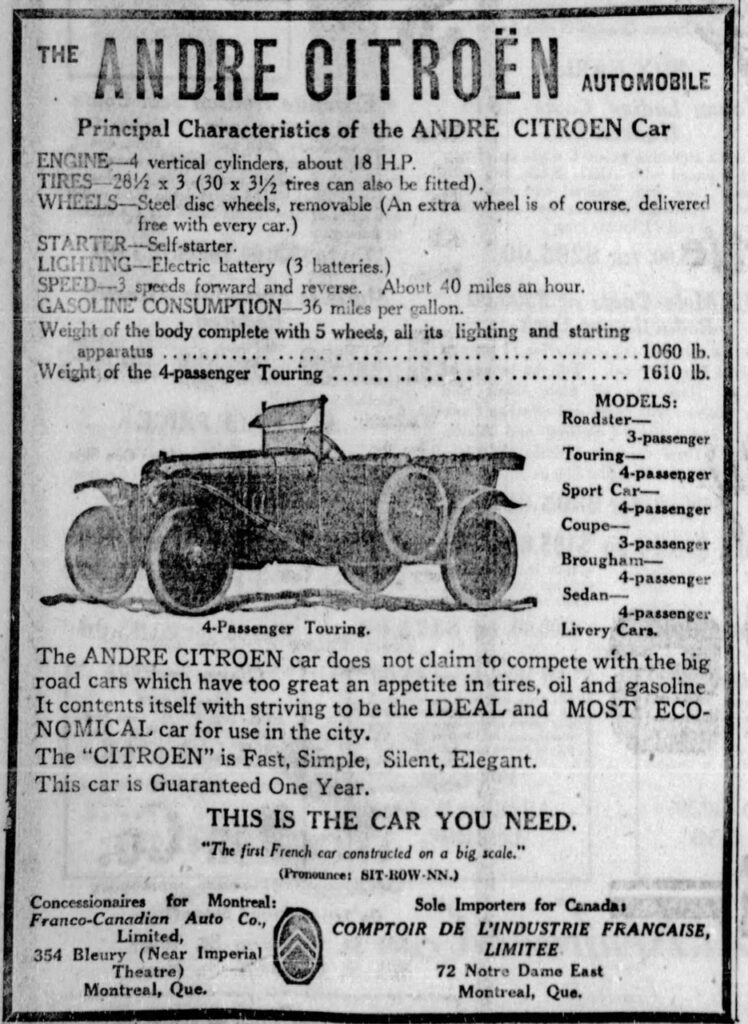

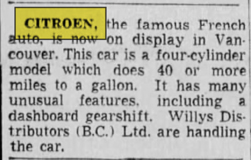


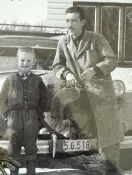



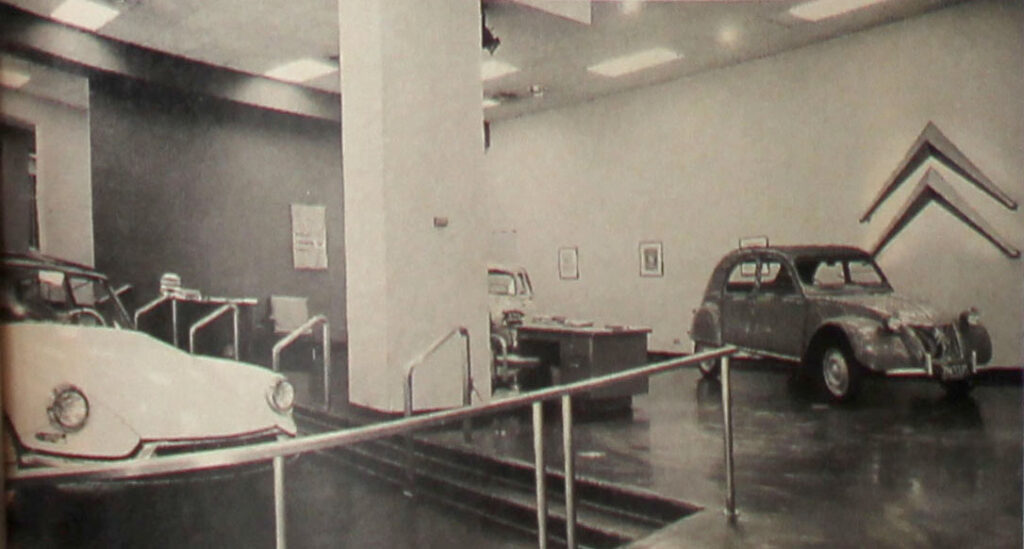



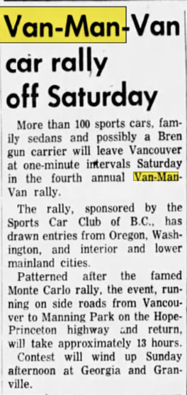
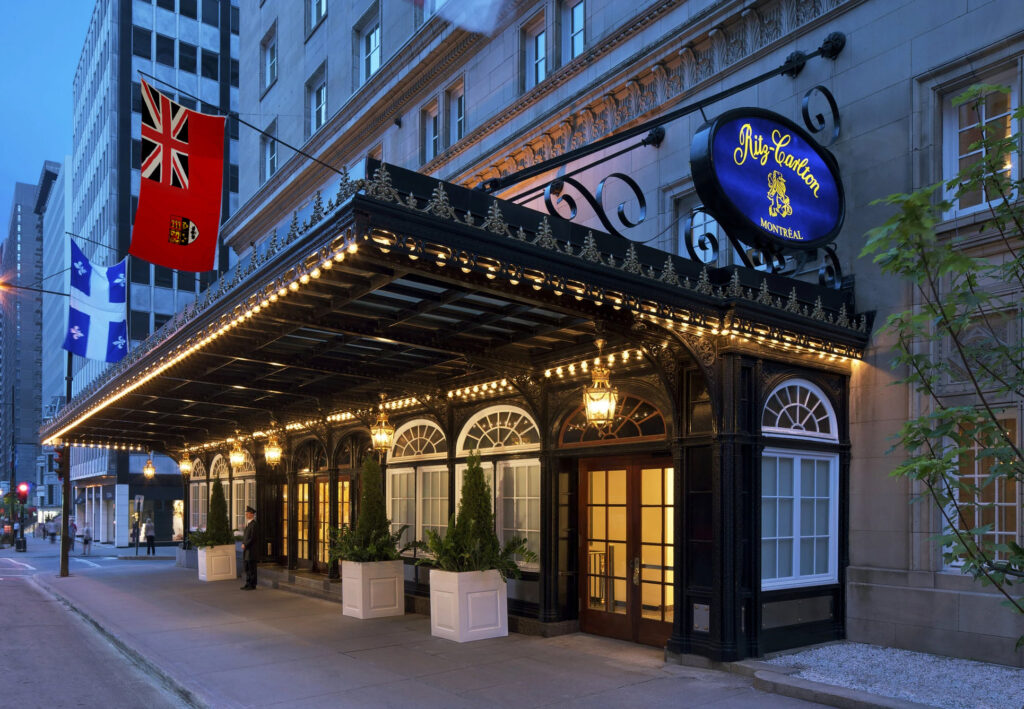
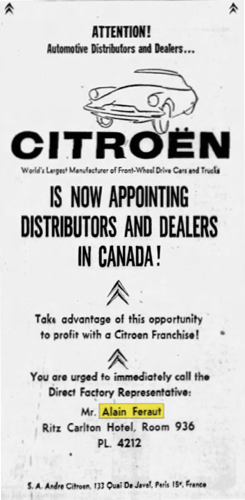

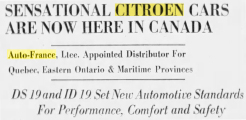

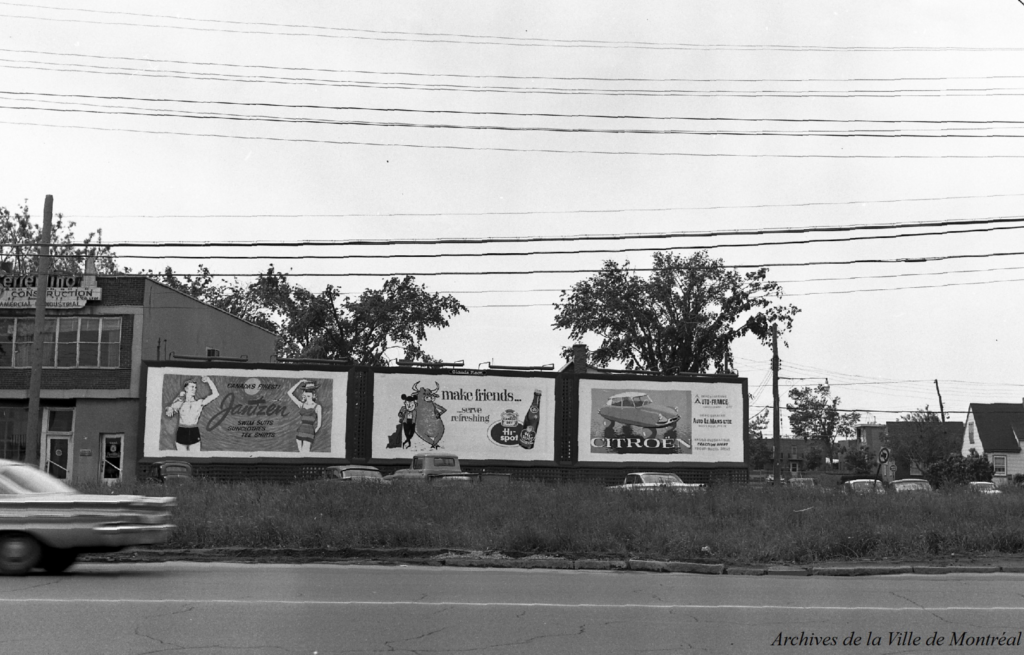

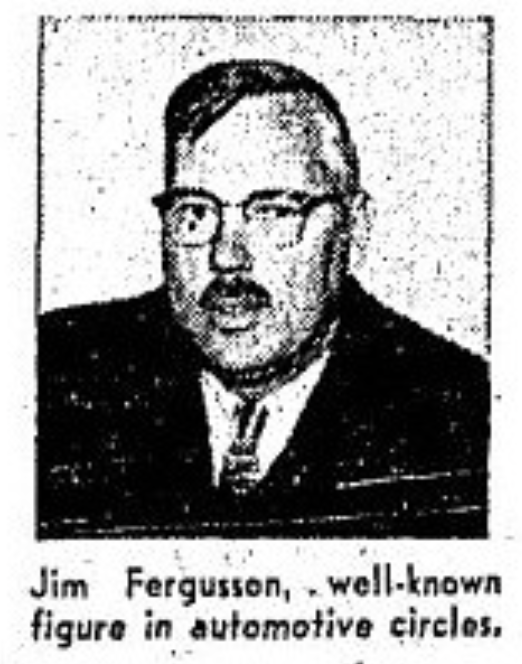
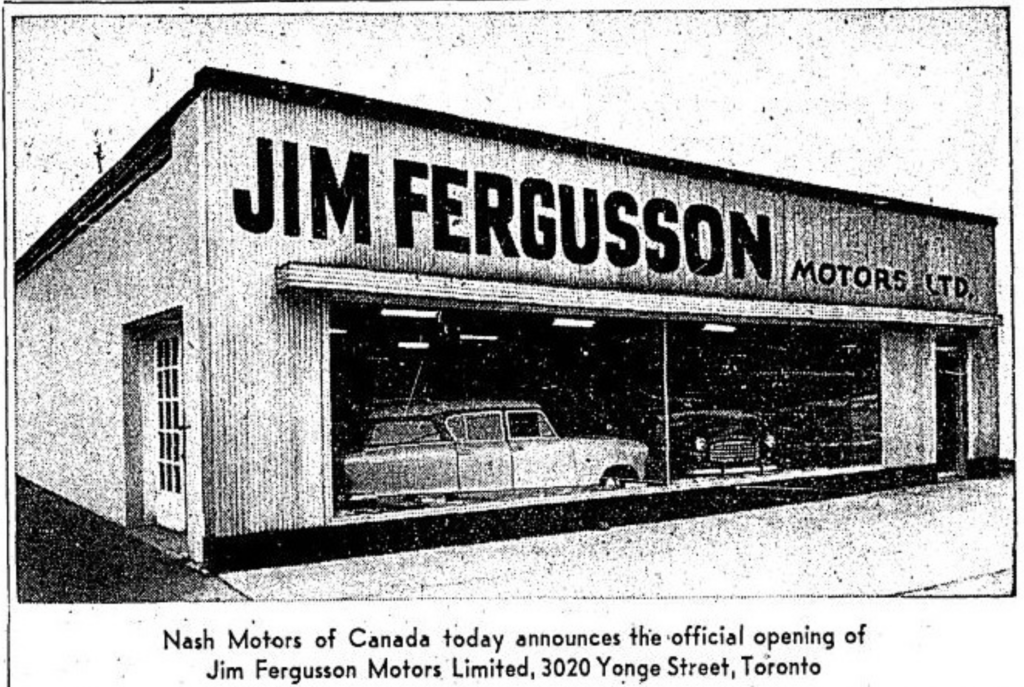

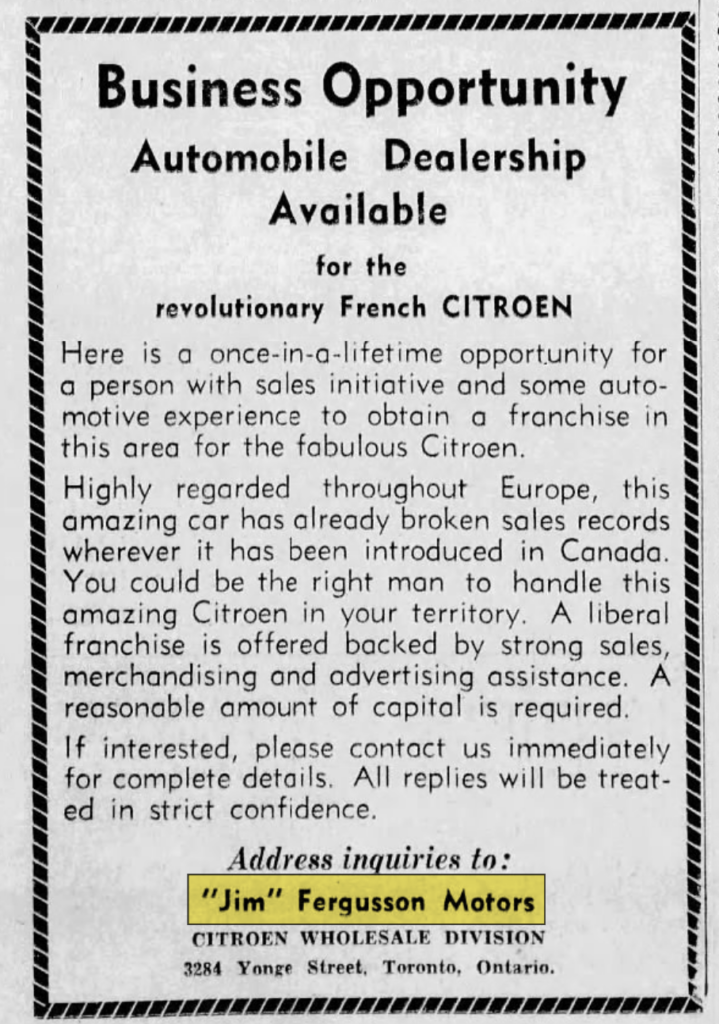
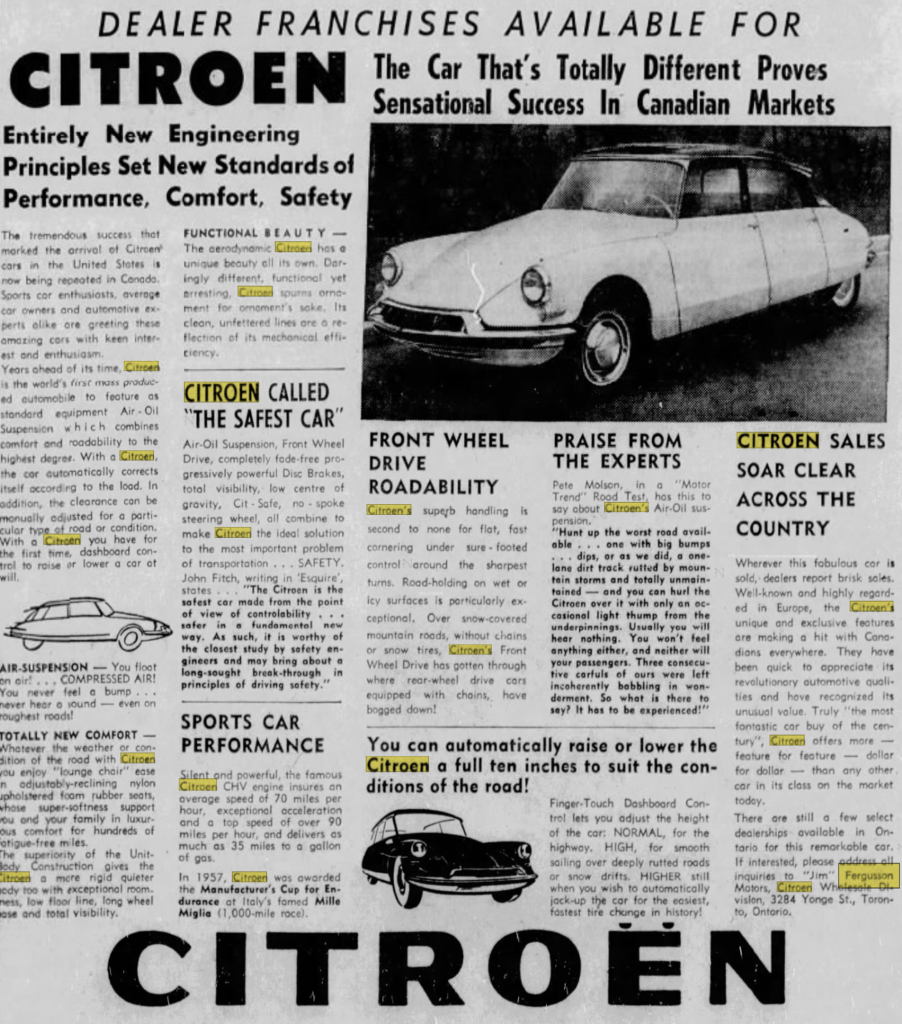


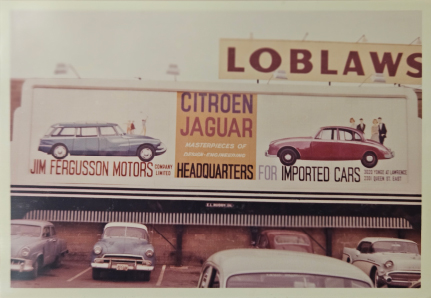
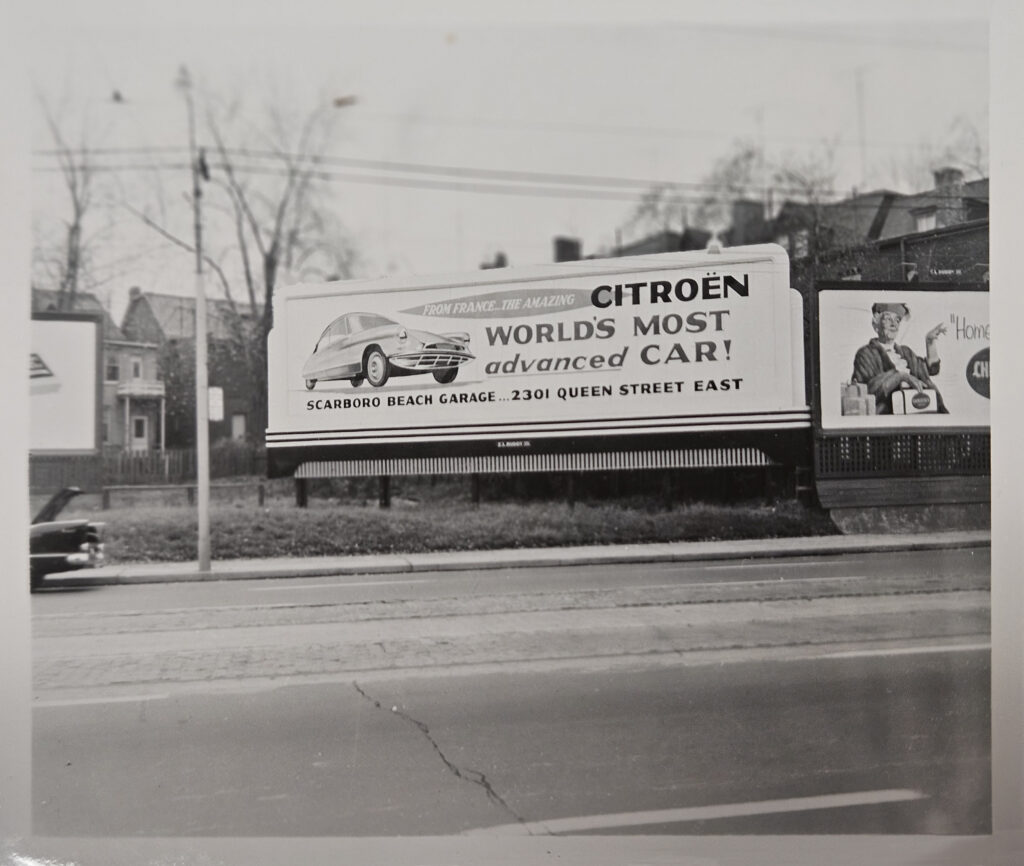
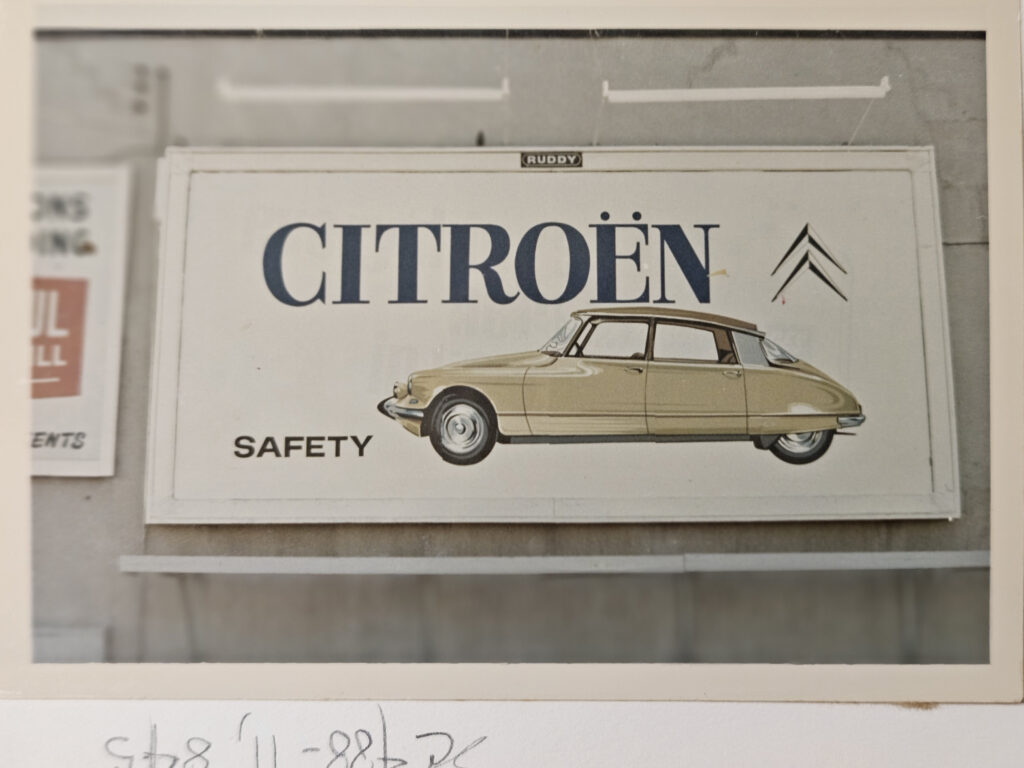
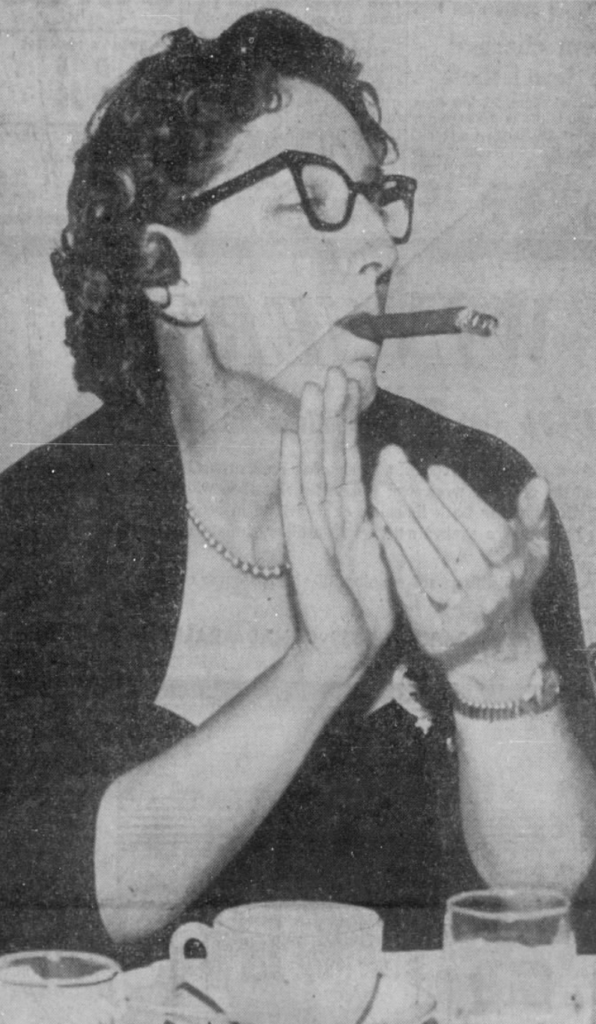
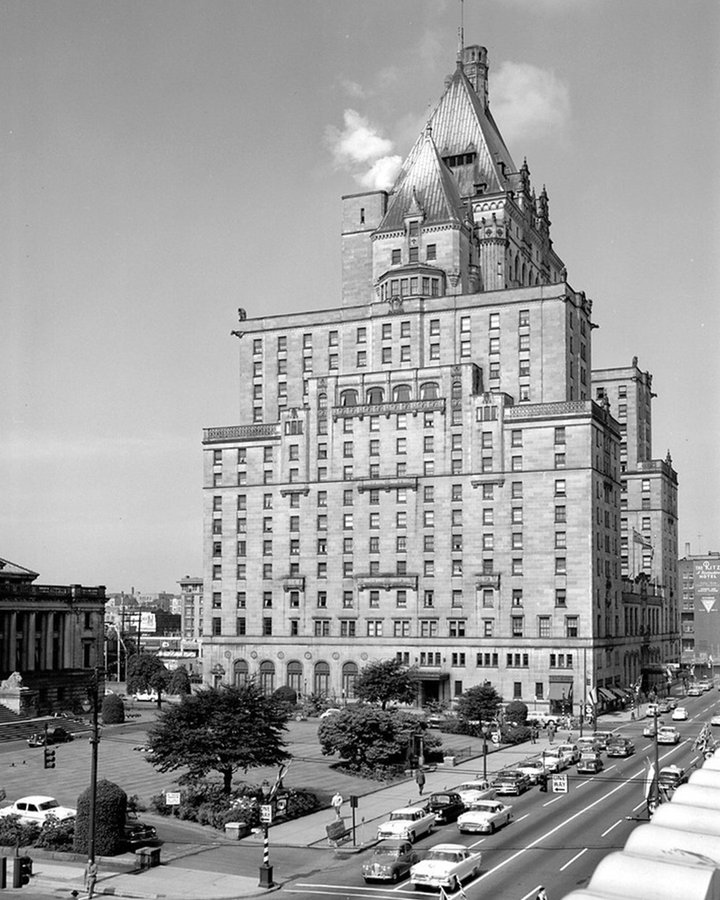
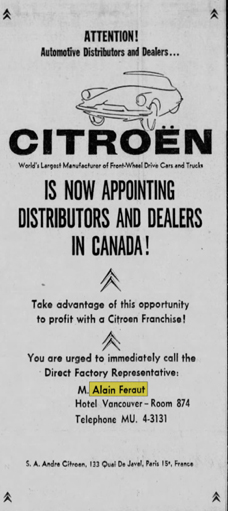
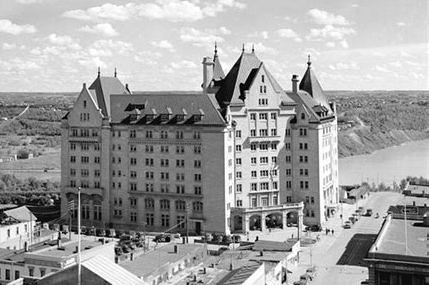
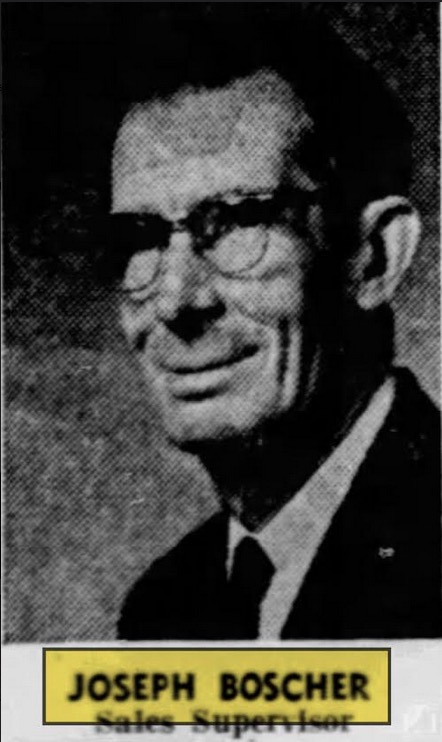


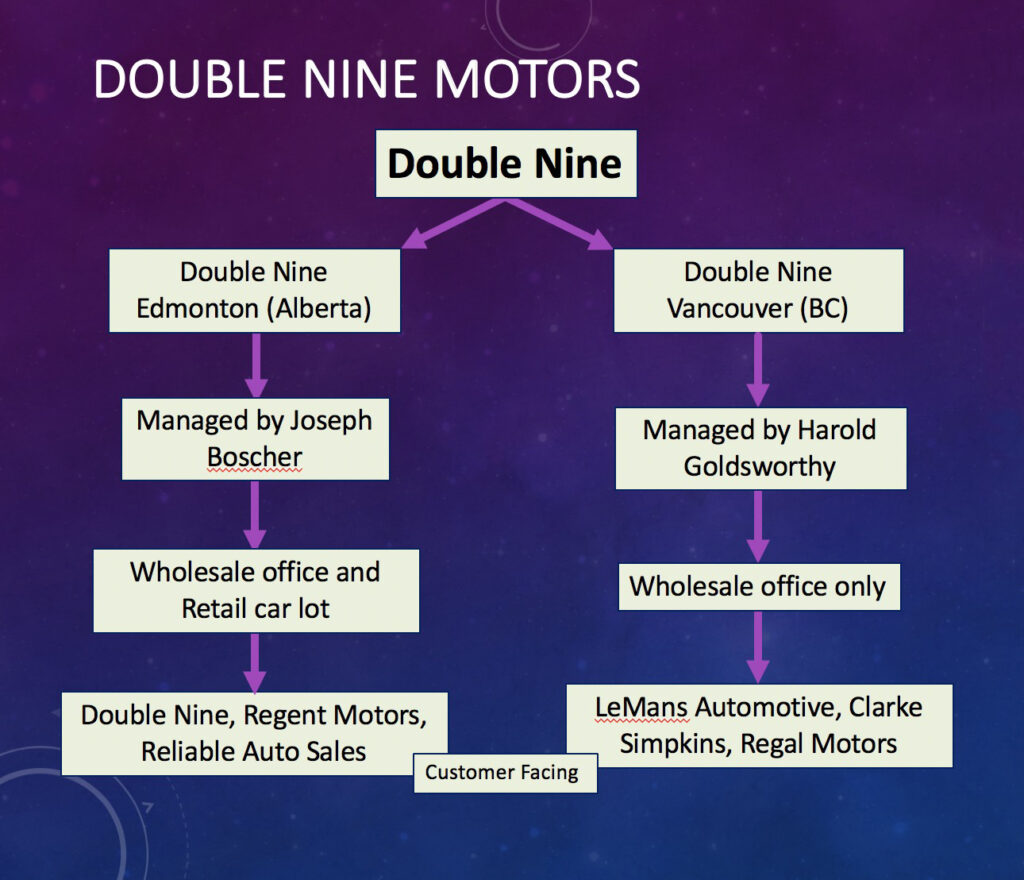
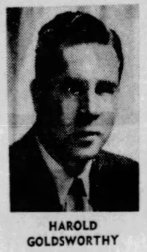
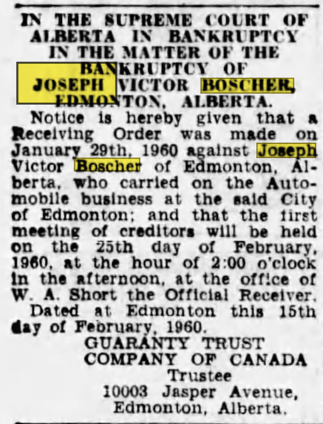
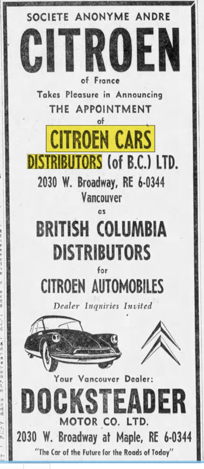


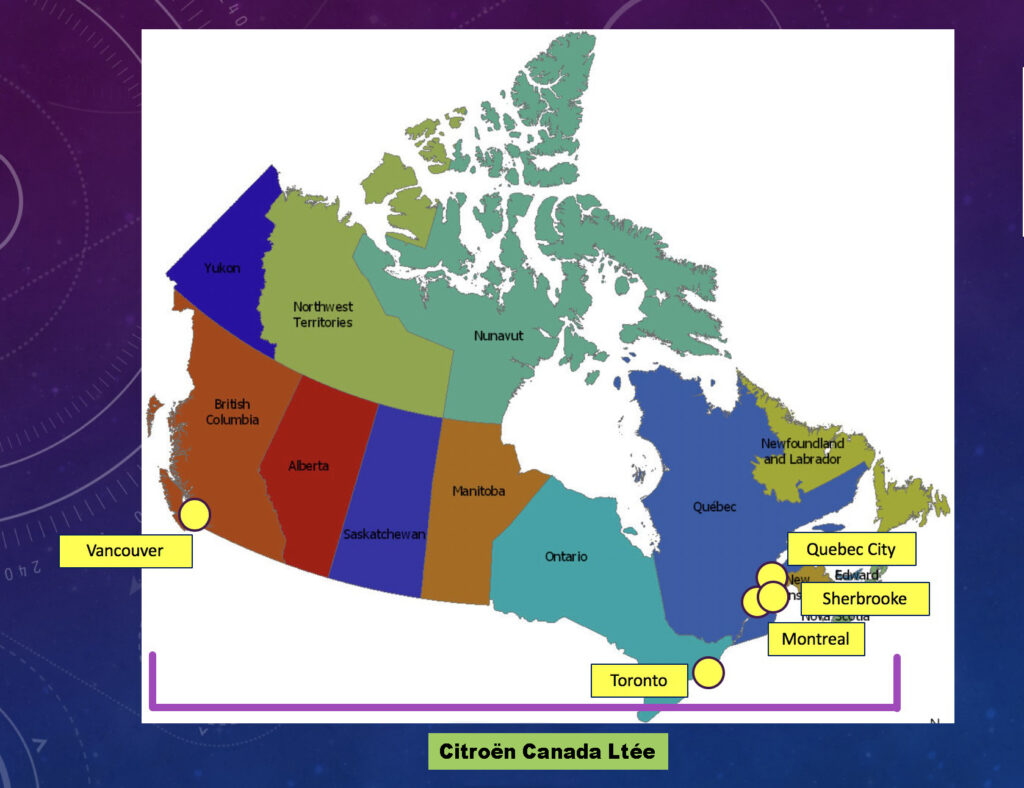

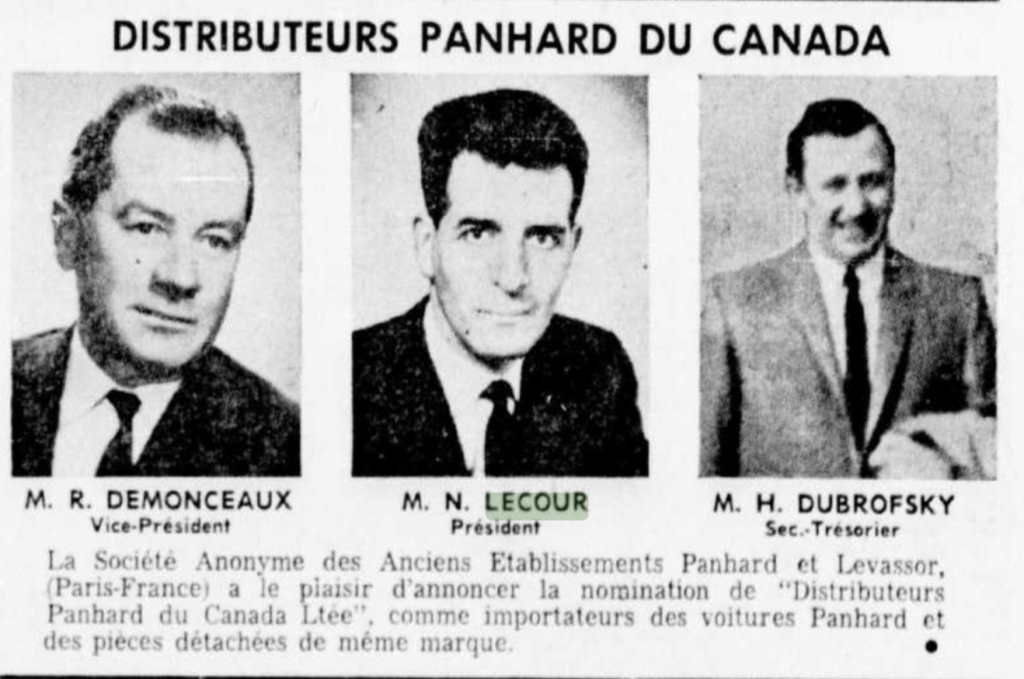
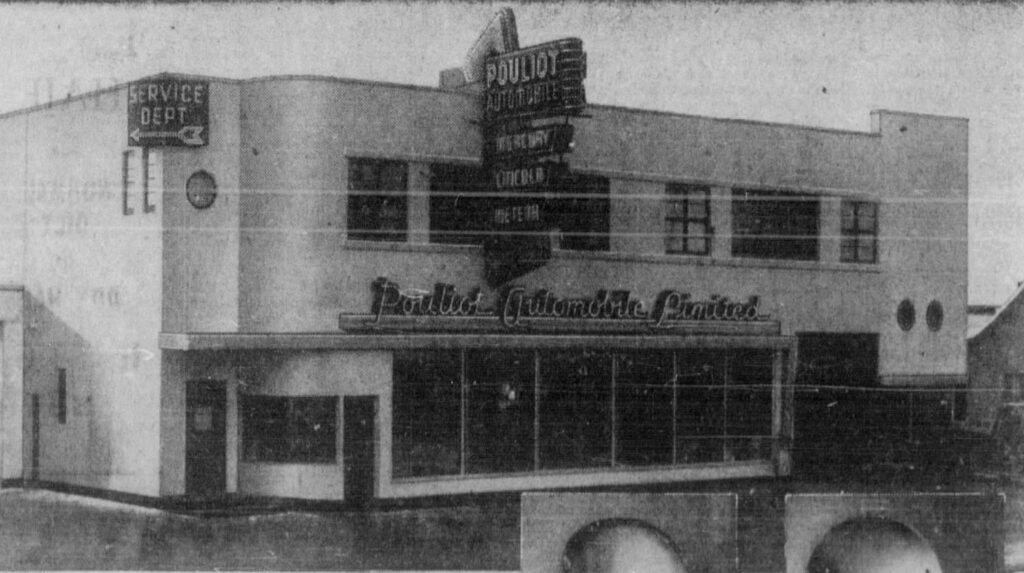



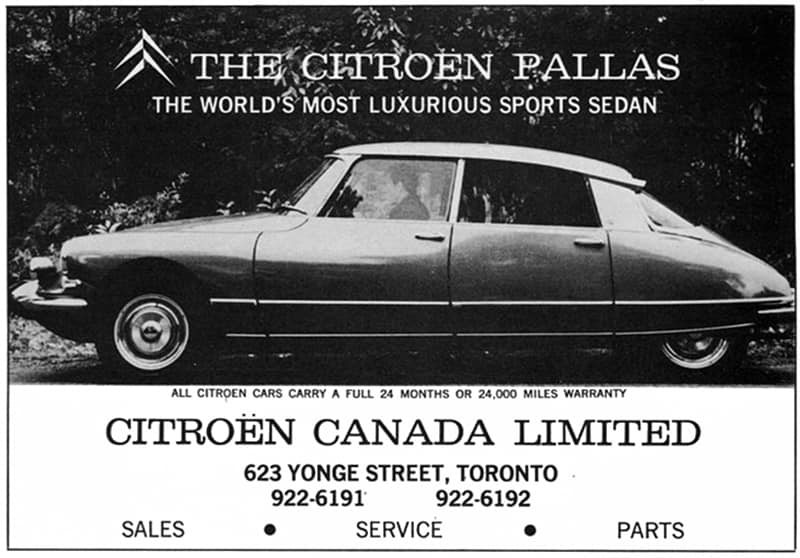


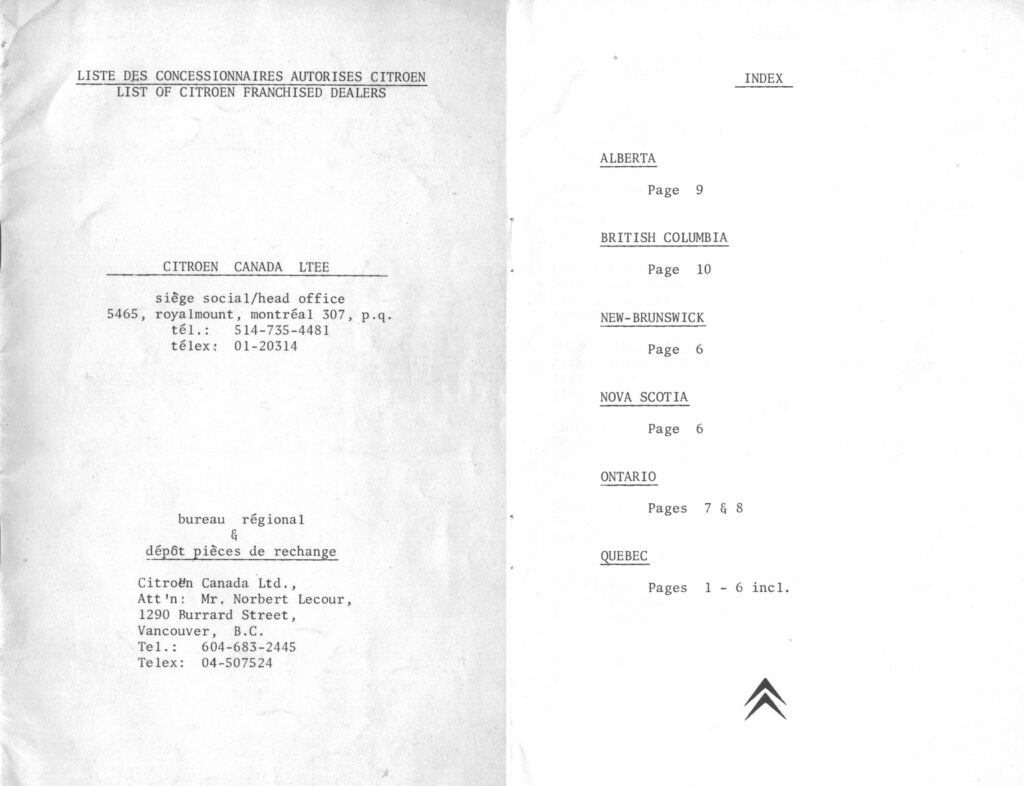
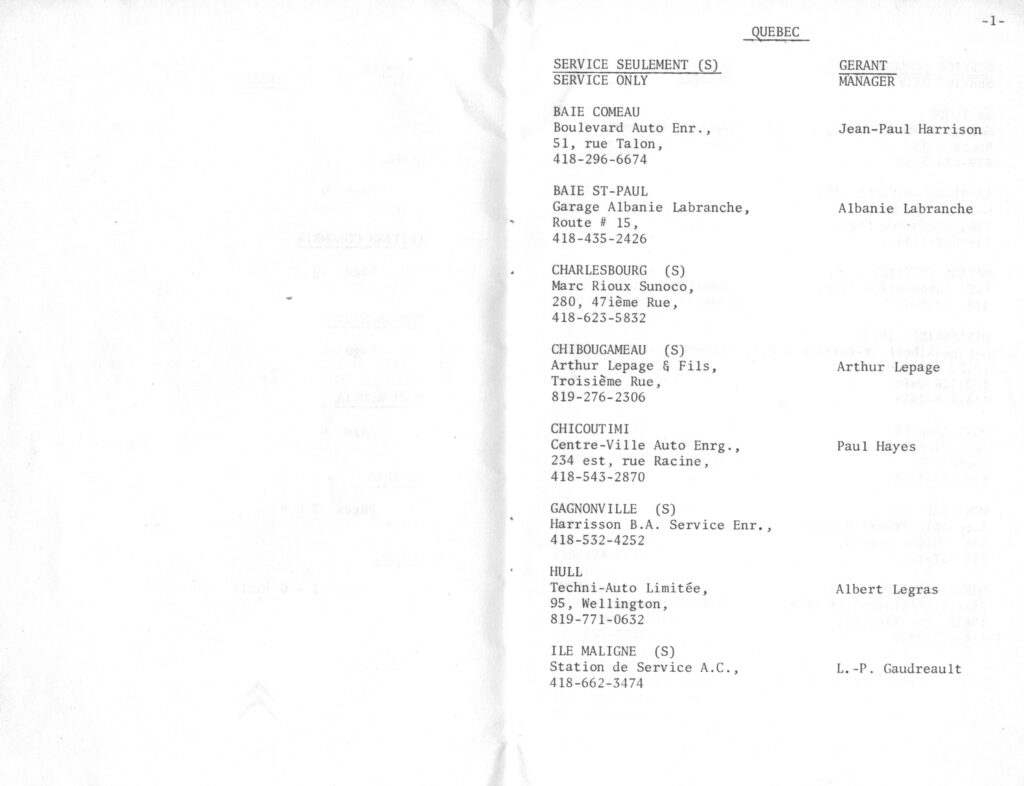

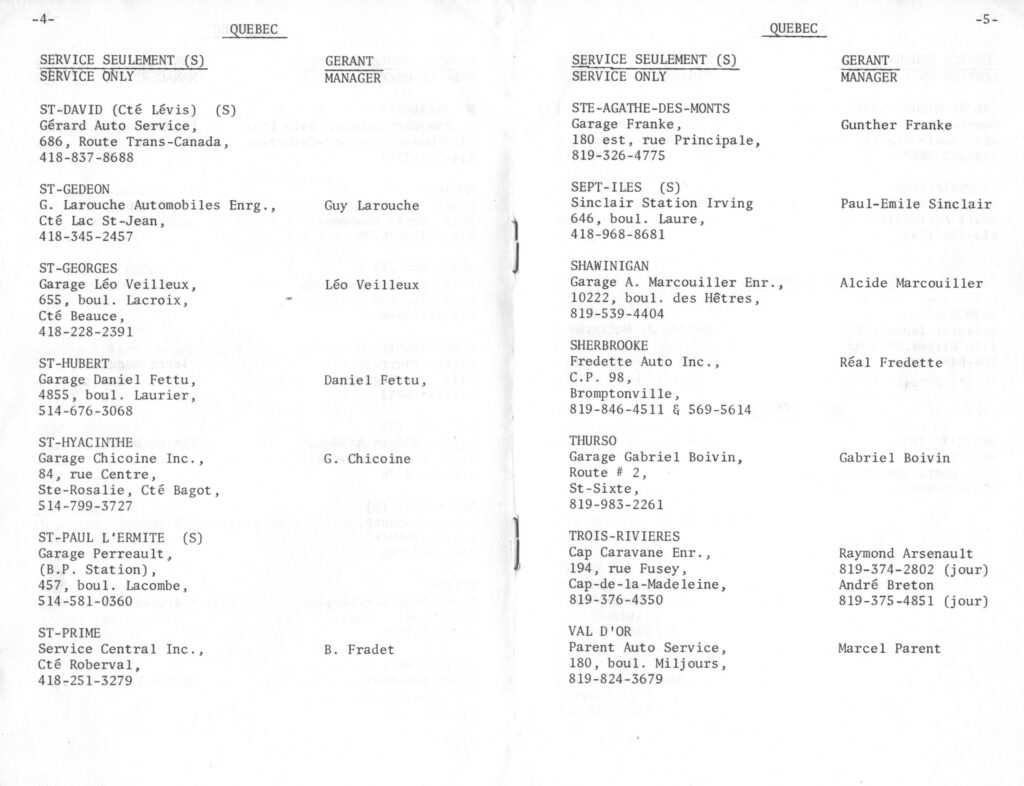
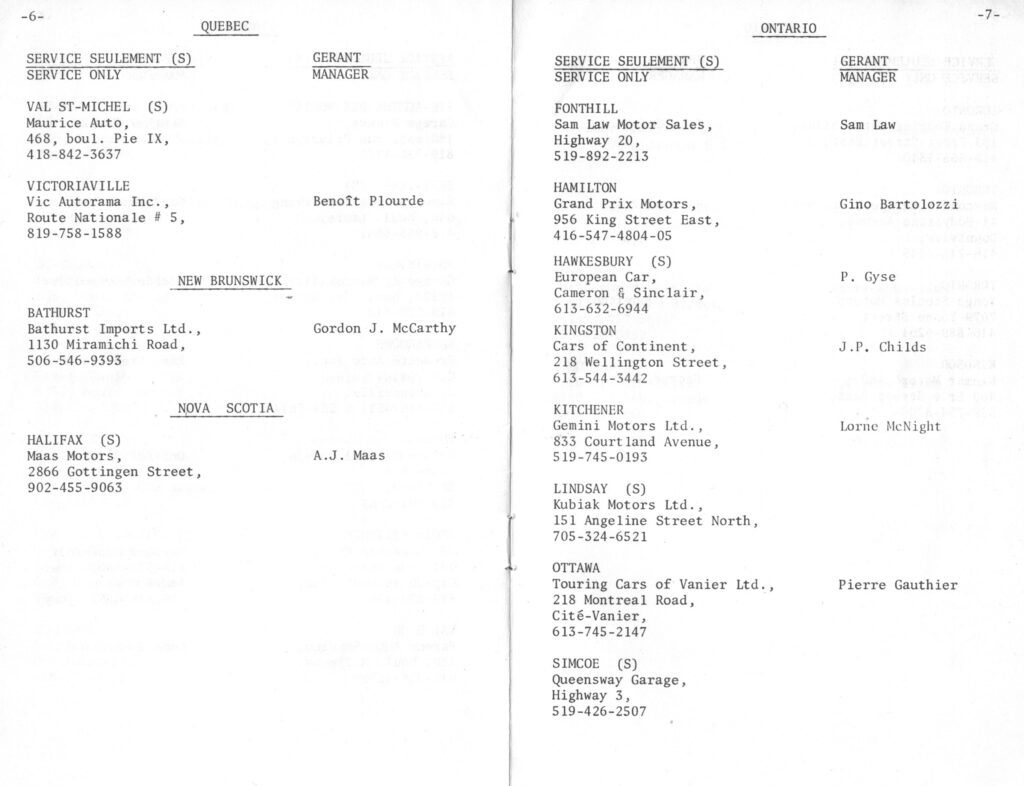
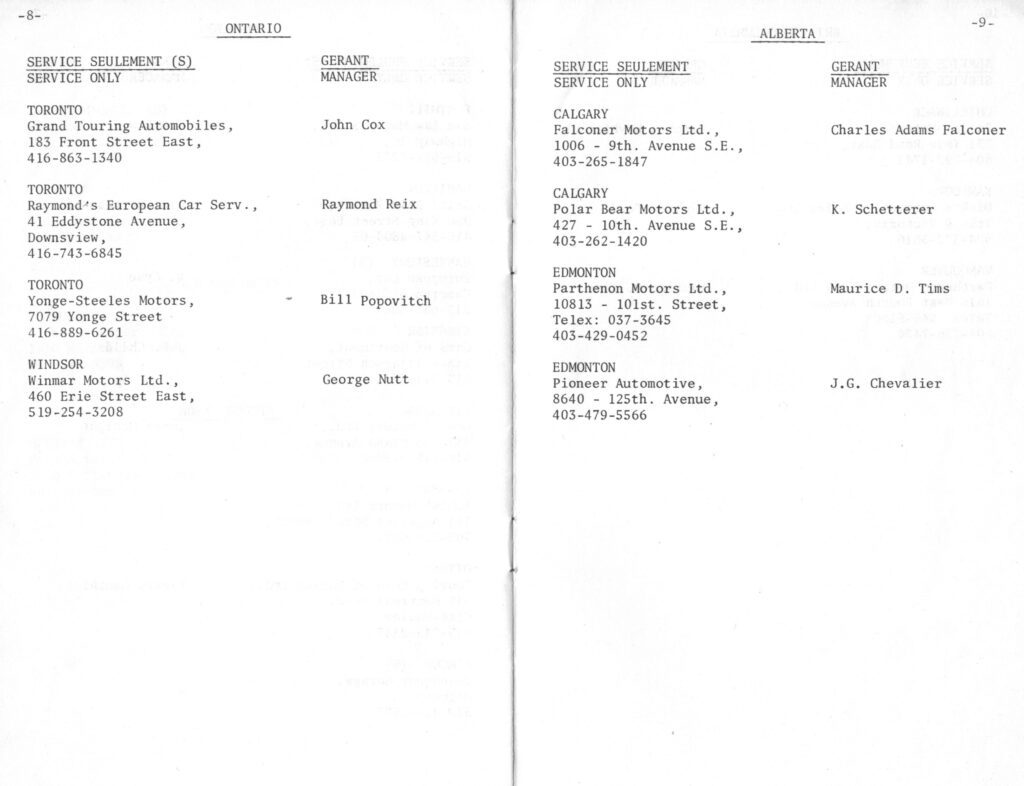
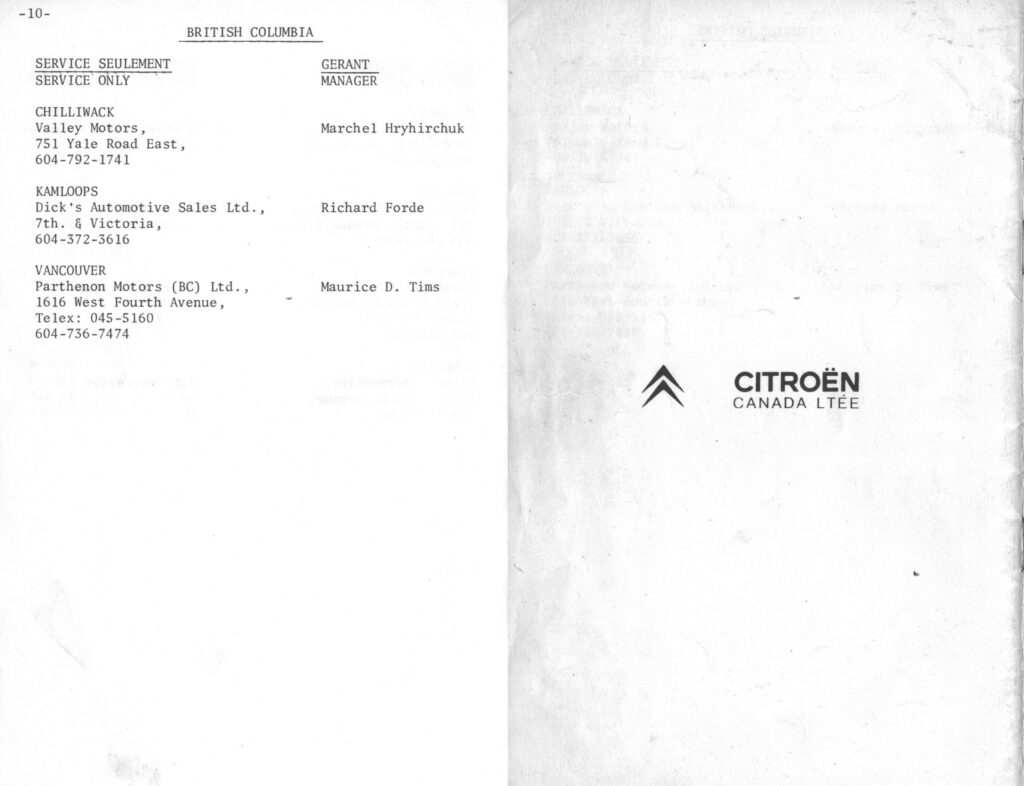
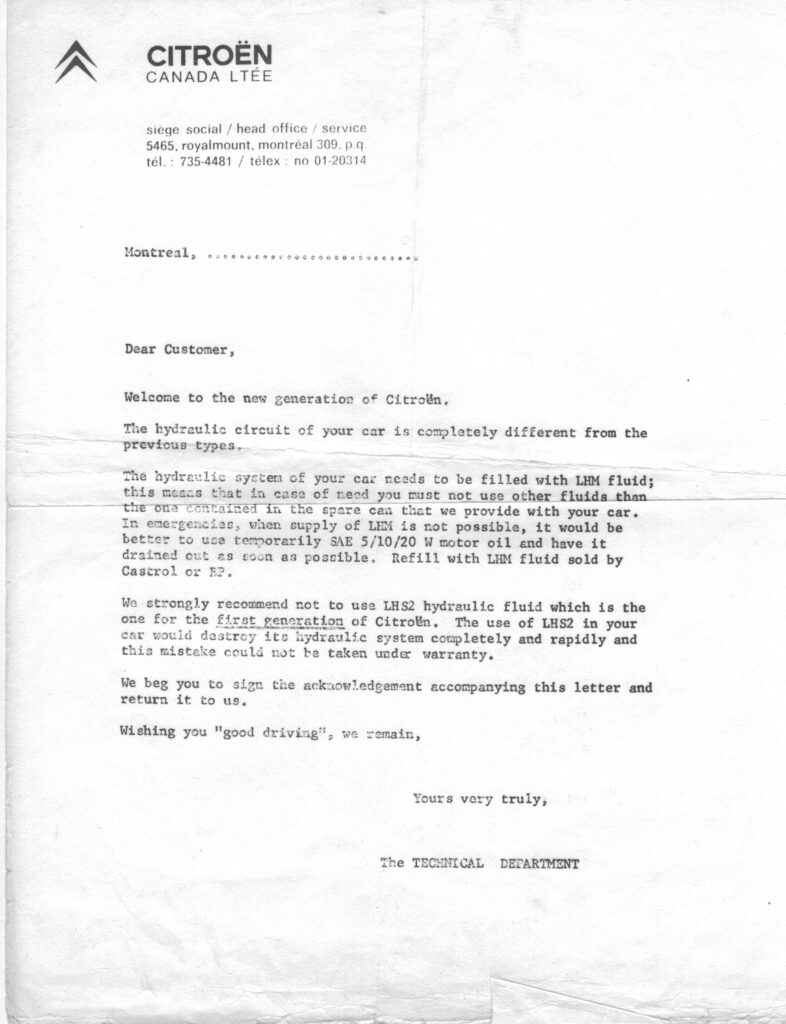
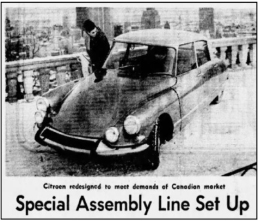
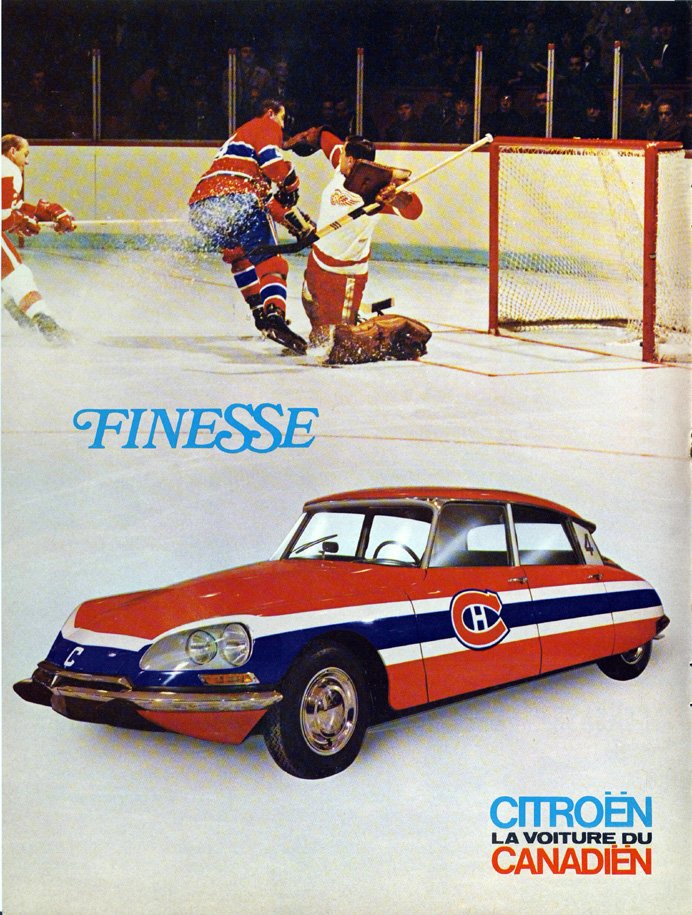
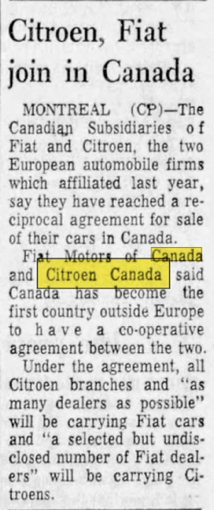

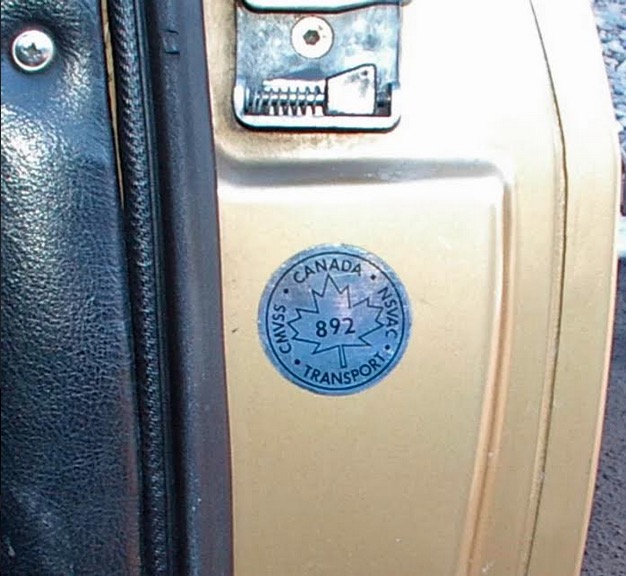

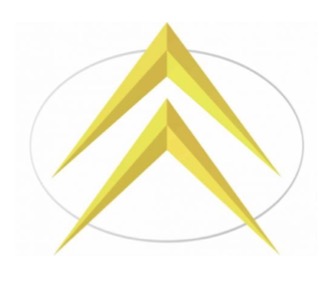

Thank you for this well written and researched article. I didn’t know that the radiator duct flap and rear heater were Canadian adaptations. My first Citroen was a 1970 D Special and it was cold! One particularly chilly Edmonton evening, my girlfriend and I drove to the movie theatre to see the debut of Superman. It was at least -30C. My car had the rear heater, but because of the length of heater hose running through the cold chassis, it actually made things worse. I had the radiator flap fully closed, which then caused the car to overheat, while we remained frozen inside, stamping our feet. When we got to the theatre and saw the people lined up outside, we abandoned the idea and went straight home for a hot drink. It is a wonder that she agreed to any future dates. My next DS had the rear heater relocated to the front right fender, which enabled some useful heat.
Some cars are good for the summers only but we couldn’t really afford two cars when we were young could we?
Gordon, love the story about the movie theater! The -15C Cold weather option (additional heater, flap, etc) was something that was offered by Citroen worldwide, but they decided to make it a basic feature for all Canadian DS’s after about 1965.